Wix is a popular cloud-based website builder and hosting platform that makes it easy for small and medium-sized businesses to create and manage their websites. Founded in 2006, Wix has since become one of the most well-known website builders in the market. It is currently the third most popular CMS behind WordPress and Shopify.
Whether you’re a small business owner, a blogger, or an aspiring e-commerce entrepreneur, you’ll need to familiarize yourself with SEO for Wix. Think of it as the key to unlocking your website’s full potential.
In this article, we will explore all the details of Wix optimization. We’ll discuss the platform’s strengths, its weaknesses, and key in on some strategies you can use to enhance your website’s search visibility.
Key takeaways
By following the SEO checklists and guidelines provided, you can optimize your Wix website to achieve better search engine rankings and enhance your online visibility. Here are the main Wix SEO tips:
Wix SEO technical checklist:
- Make your site mobile-friendly.
- Ensure the presence of a sitemap.xml and robots.txt file.
- Optimize URL slugs and implement 301 redirects if necessary.
- Set up canonical tags and check indexation.
- Run regular website audits.
- Connect your site to Google Search Console and Google Analytics.
Wix on-page SEO checklist:
- Optimize content based on user intent and keywords.
- Add unique title tags and meta descriptions for each page.
- Incorporate internal links to enhance site navigation and SEO.
- Optimize images and provide descriptive alt text.
- Implement schema markup to enhance appearance in search results.
Wix off-page SEO Checklist:
- Actively build high-quality backlinks from reputable sources.
- Create and optimize a Google Business Profile.
Wix SEO advantages
Let’s break down Wix’s top SEO advantages that set it apart from other CMSs.
➕ Beginner-friendly: Wix is easy to use; its drag-and-drop editor lets you build an appealing website without the need for special coding skills. The CMS also automates the setup of many SEO elements and guides users through basic SEO steps.
➕ Google integration: Inspect your site and view reports for Google Search Console directly from your Wix dashboard.
➕ Free SEO features: Every Wix subscription offers SEO features to some capacity, even the free plan. However, the available extent of these features and level of customization and control varies depending on the subscription tier you get.
➕ Advanced SEO features: If you don’t think it’s possible to get into the nitty gritty of SEO for a Wix website, think again. Wix for SEO includes a redirects manager, a robots.txt editor, the ability to add structured data, modify default meta tags, work with URL structure and slugs, create sitemaps, and so much more.
Wix SEO disadvantages
Like every CMS, Wix has its disadvantages:
➖ Limited control over advanced settings. Wix is a website builder, so it cannot provide you with the same degree of customization and control that you would normally have with a self-hosted website.
➖ Lack of some advanced SEO features. If you require direct access to your website’s back-end servers to perform advanced SEO configurations or server-level optimizations, you may find Wix’s platform restrictive. For instance, it can be challenging to edit automatically generated elements like sitemaps.
➖ Occurrence of issues with server response time and loading time. On G2, users complain about page speed issues with Wix websites.
Is Wix good for SEO?
Wix offers all the essential SEO features for reaching the top of the SERPs. It also lets you monitor your success and presents data in easy-to-read dashboards. While Wix’s CMS has some disadvantages, you won’t notice them unless you have advanced SEO requirements and a large website.
Wix is an excellent tool for small businesses and website owners who prioritize ease of use over absolute control over their websites. You’ll find that Wix does a great overall job at addressing the fundamental SEO needs of a typical website, as confirmed by this Wix SEO review. Many users simply do not require deep involvement in those complex back-end related tasks or SEO.
Who can use Wix?
Wix’s SEO capabilities are great for most website owners. You’ll love Wix if:
- You operate a small or medium-sized business or manage a personal website.
- You’re a business owner and want to spend more time managing your business and less time mastering website design and features.
- You run a local business and want to rank well in local search results without putting in too much effort.
- You are a beginner in SEO and don’t have SEO specialists on your team, or your website development resources are limited.
Wix is also an excellent choice for marketing agencies. Take, for example, Wix Studio, which is a collaborative workspace equipped with customizable roles and permissions. It makes it easy for you and your team efficiently manage all aspects of your sites, including reusable assets, team members, subscriptions, domains, and more. Wix Studio also offers extensive coding features and customization options, such as built-in AI for faster code generation, CSS customization, repeatable custom themes, widgets, and interactive components. It also enhances the collaborative process by enabling clients to provide live feedback.
Wix vs. WordPress
Let’s compare Wix with the world’s most popular CMS for SEO, WordPress.
Both platforms are popular for building websites, and each comes with its own strengths and weaknesses. Here are their main differences:
- WordPress is more flexible and customizable: Developers have complete access to the code, allowing for extensive customizations and integrations. Plus, the CMS has an extensive theme ecosystem. Wix, on the other hand, lacks this degree of complexity, but it is constantly improving its functionality. For instance, Wix’s new Velo integration allows you to create dynamic web applications and add custom functionality to your Wix websites. It lets you use custom coding and integrate APIs easily. So unless you need to perform super complex tasks during your site’s development, you will not see much difference in functionality between Wix and WordPress.
- WordPress has robust SEO capabilities and plugins available: With plugins like Yoast SEO and its All-in-One SEO Pack, you can easily optimize your WordPress website for search engines. Included in these plugins are meta tags, XML sitemaps, and keyword optimization. You don’t get nearly as much flexibility with Wix. On the other hand, Wix’s SEO features are included directly in the platform without installing plugins.
- WordPress is more suitable for advanced users: Beginners may have a harder time with this platform. While WordPress provides extensive customization options, achieving advanced customizations often requires coding knowledge. Wix offers a simpler approach to customization for users who want a quick and easy solution.
- WordPress may incur additional costs: If you want hosting functionality, premium themes, and plugins, you will have to pay extra. In contrast, Wix offers more transparent pricing and a limited free plan.
Choosing between Wix and WordPress depends on factors like your specific needs, technical expertise, and the goals you’ve set for your website. WordPress is the better option if you’re looking for advanced customization options, while Wix is ideal if you want a platform that’s user-friendly and doesn’t require technical expertise.
To identify any website’s CMS, you can use a free CMS detector tool.
Wix SEO setup guide
We created checklists to guide you through essential SEO strategies for your Wix site. These checklists cover everything from keyword research to mobile optimization, and content quality to backlinks. But first, let’s begin with some basic setup tips for optimizing your Wix site.
Choose your desired Wix template
Once you create a Wix account, begin by deciding on how you want your brand-new website to look.
Just select a template that matches your business type.
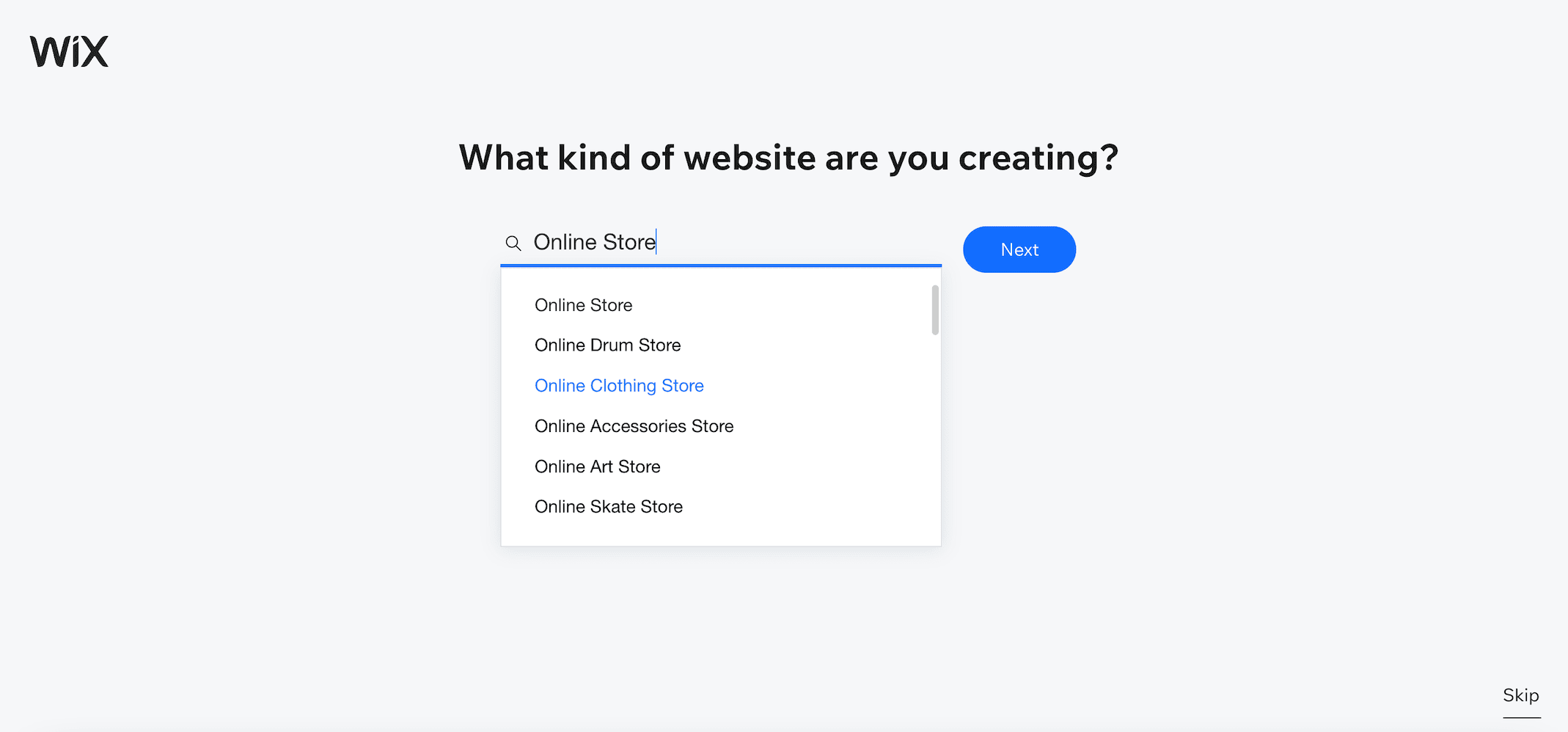
Next, enter the name of your website and provide information about your online experience, what you intend to sell, and where you plan to sell it.
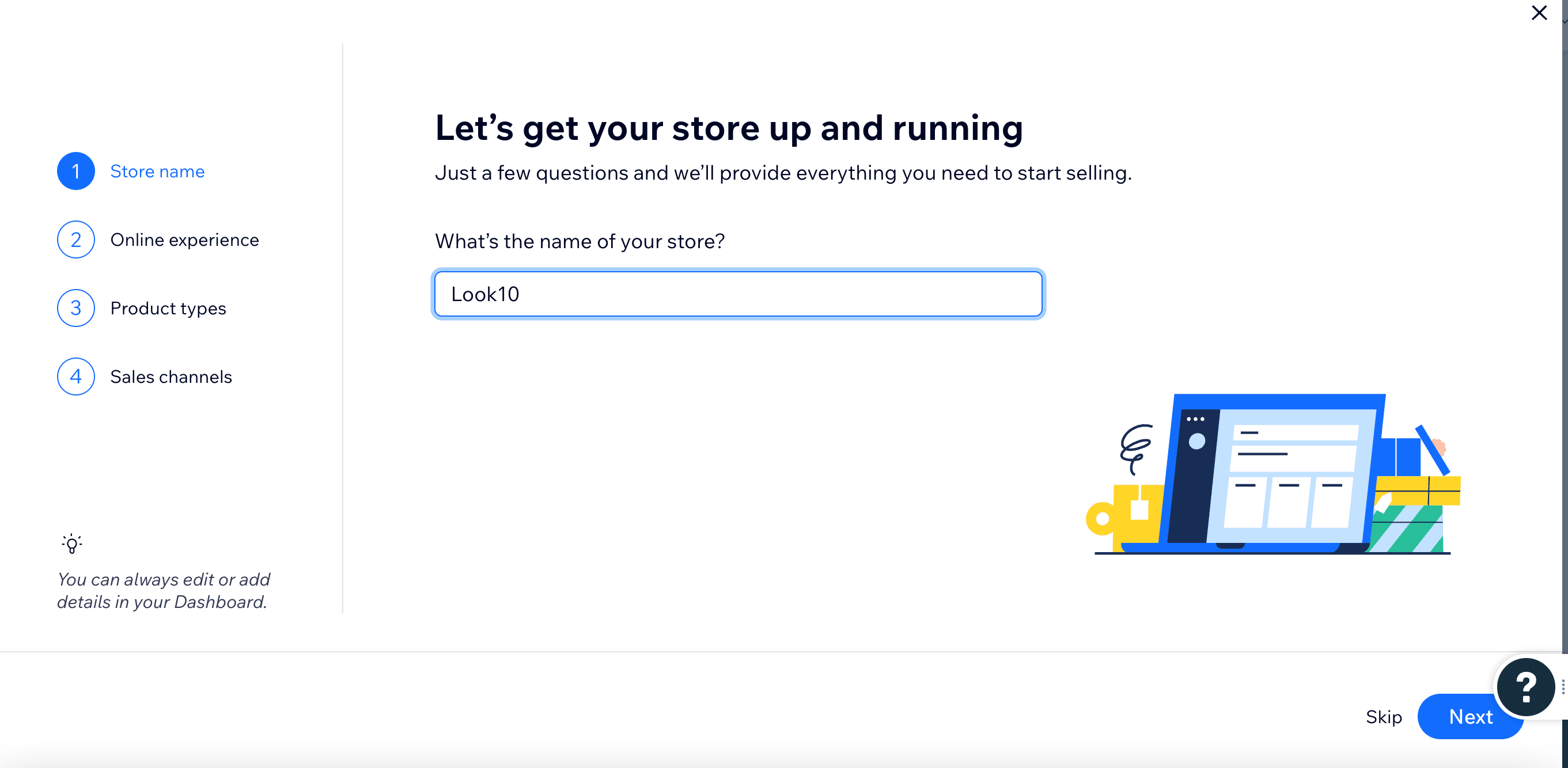
After filling out the details above, you can move on to designing your website. You can either select a pre-designed template or let Wix ADI choose one for you.
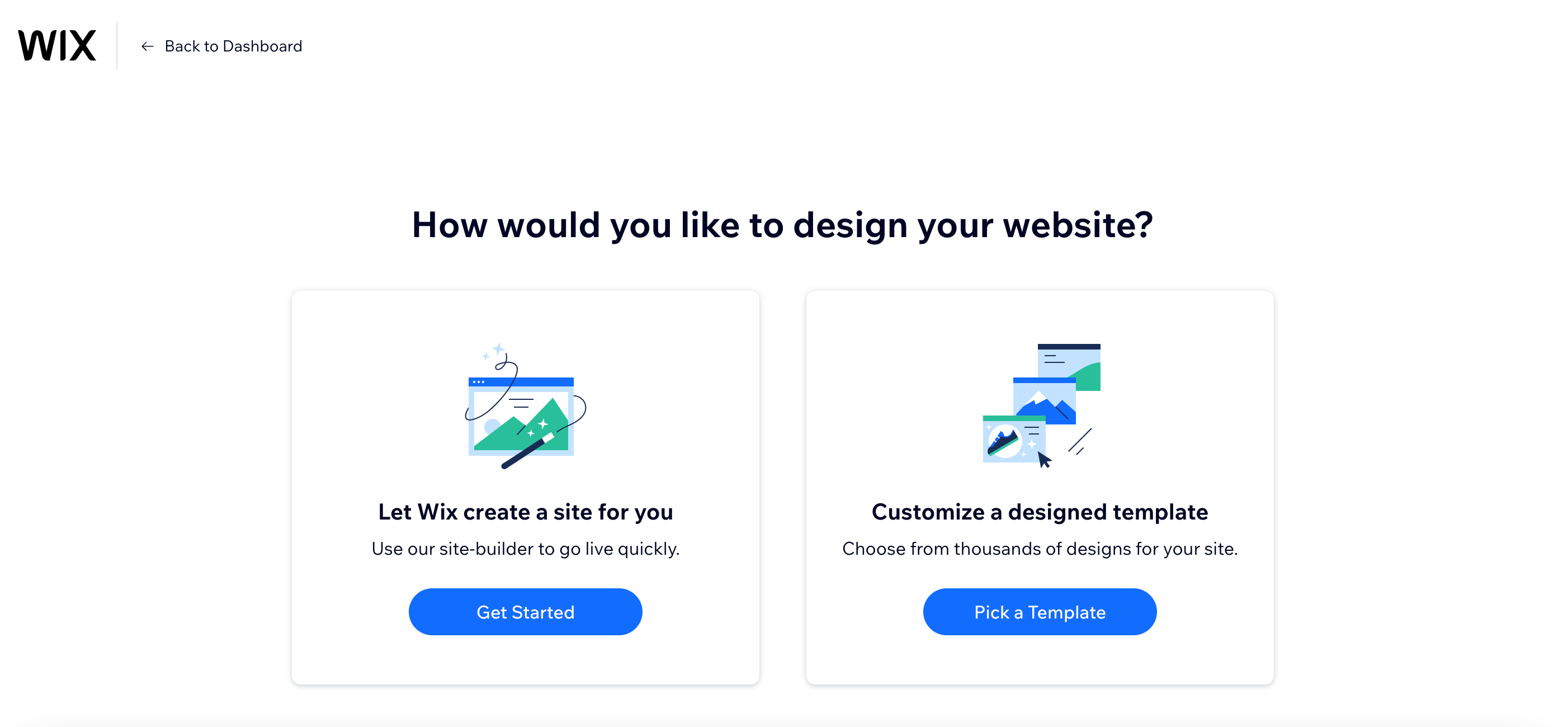
If you prefer to choose a template yourself, the platform will provide you with dozens of templates. We filtered templates by the Fashion and Clothing category and selected the one we thought was the most appropriate.
After deciding on the template, click Edit. You will be redirected to the customization stage.
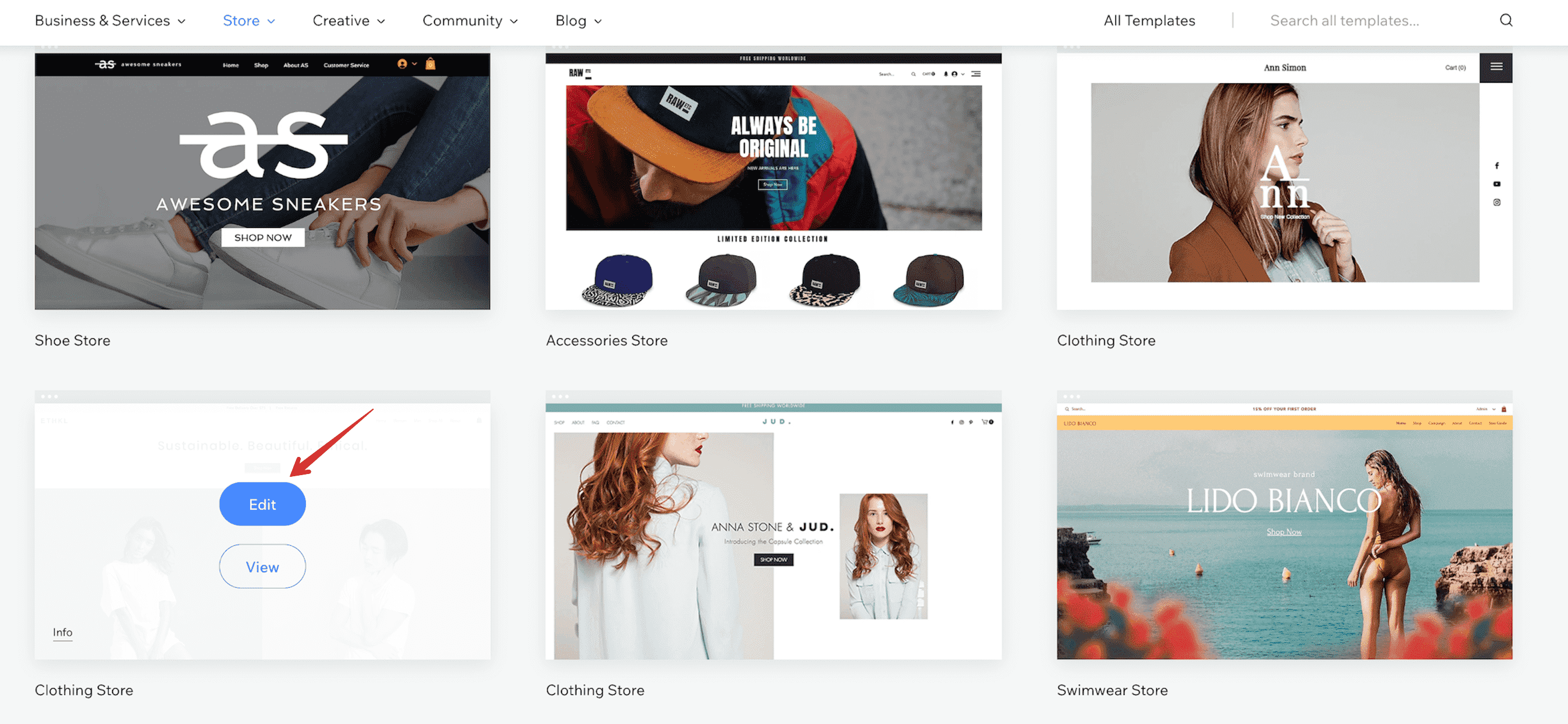
Note: Once you choose a template, you cannot change it.
If you want to speed up the setup, try Wix ADI, an AI technology that offers design ideas. Just answer a couple of questions about your preferences, and it will generate several ideas for you. From here, you can choose your homepage layout and equip your website with pre-made pages (you can further customize fonts and colors as needed).
Customize your website and set up its structure
Now it’s time for the customization stage.
In the Wix Editor, you can change the theme’s colors and text, adjust the page background, and add your media to the pages. Additionally, you can add various sections (e.g., Contact or Services) and elements (e.g., buttons) to the pages.
Once you state the business type, Wix will offer sections that are worth adding to your website.
Wix provides a default website structure, but you can easily modify it to suit your needs. Add new pages, delete suggested pages, rename them, create subpages for categories (this is how you create a website hierarchy), and more. All of this can be found in the Site Pages and Menu tab.
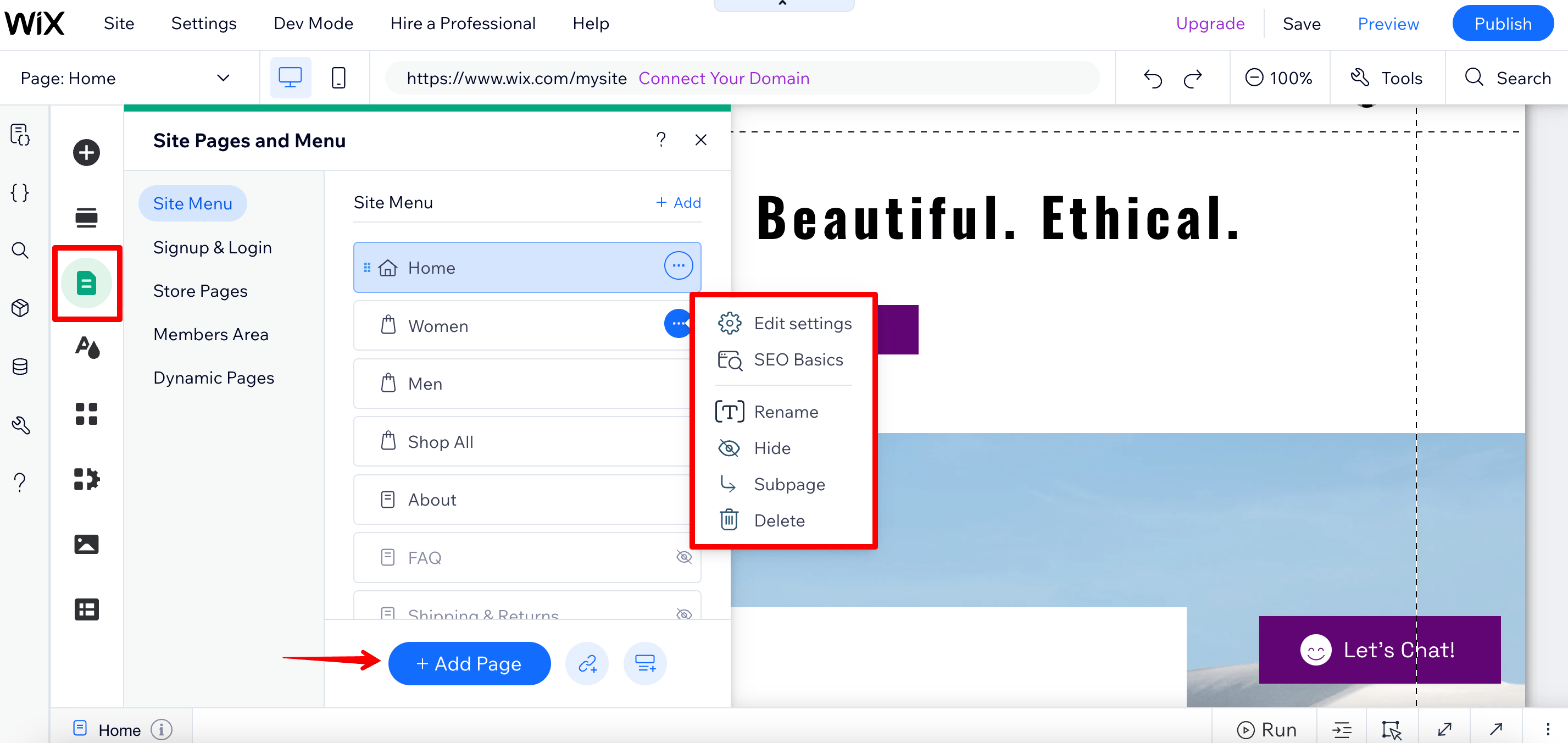
If you want to add a new page, Wix offers numerous page templates for each type. You can also create a page from scratch.
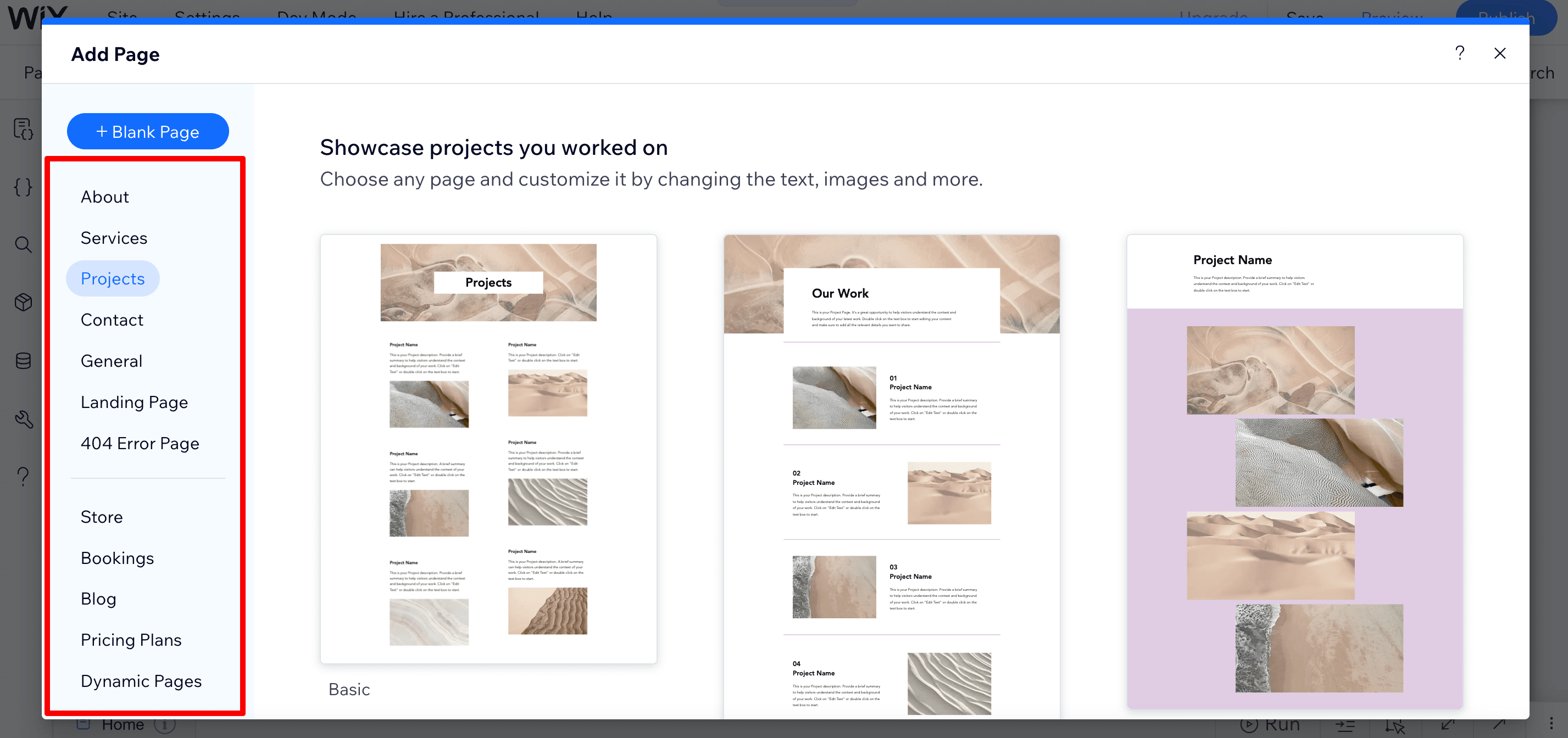
Wix SEO technical checklist
Now that you’ve fine-tuned your website’s appearance, it’s time to move on to optimization. Let’s start with technical SEO.
Make it mobile-friendly
Maintaining a mobile-friendly website ensures the best experience for your visitors. Your fonts and images should be automatically resized for optimal viewing. Moreover, you can add mobile elements, like a quick action bar, back-to-top button, welcome screen, and more.
To turn the mobile-friendly view on or off, click Settings ▶️ Mobile Friendly.
The website will automatically resize your text, fonts, and images.
To see a mobile version of your website, click the mobile phone-shaped icon. After clicking it, you can customize the mobile version (these changes will not affect how your website looks on the desktop). Pay special attention to fonts, buttons, and navigation to ensure it is easily readable and usable on smaller screens. Minimize intrusive interstitials or pop-ups to ensure your site’s scrolling stays smooth. Also, craft concise headings and shorter paragraphs. Short and punchy content always looks nice both on desktop and mobile devices.
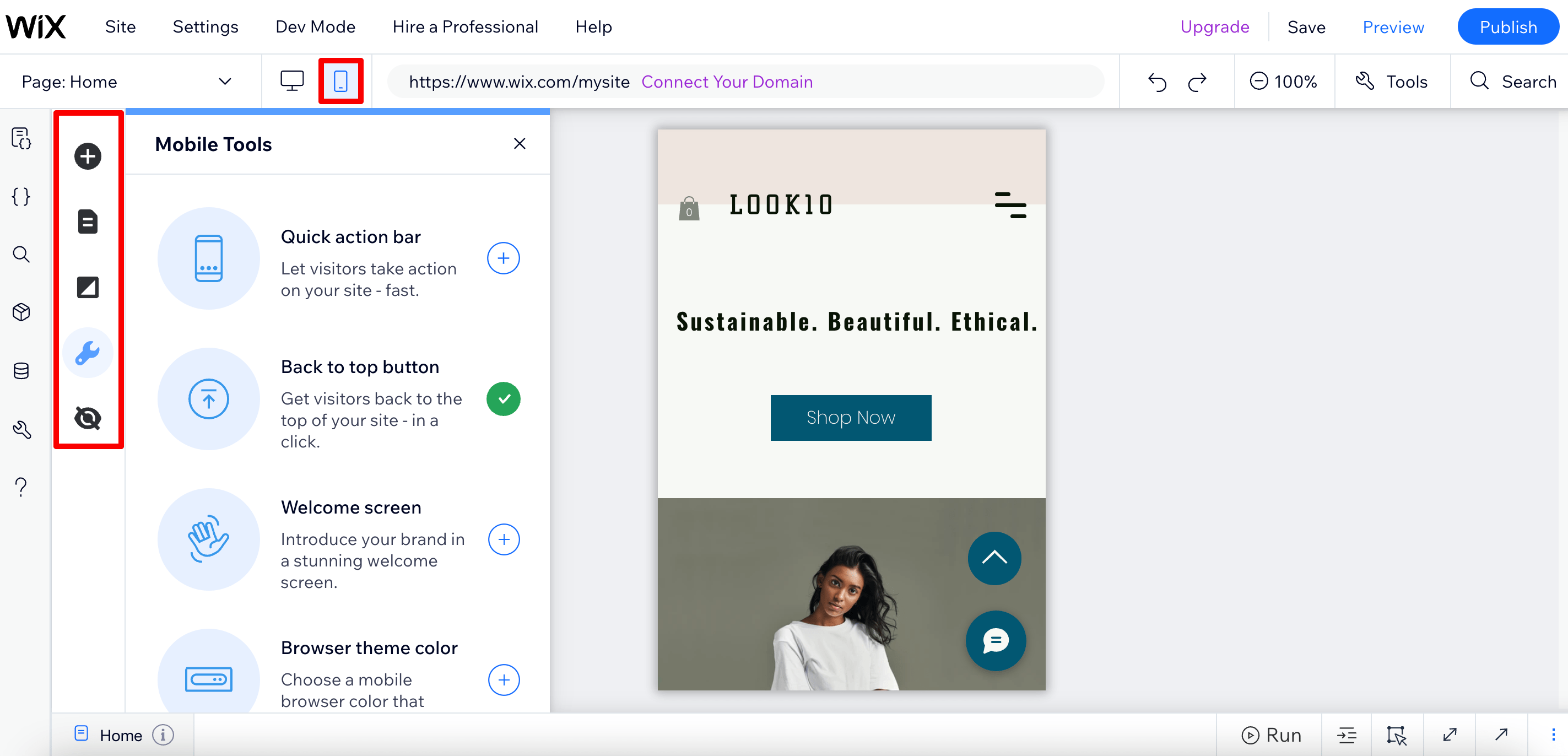
Add a sitemap.xml and robots.txt file
A sitemap is a valuable tool that assists search engines with crawling your website.
Wix understands the importance of a sitemap for every website. It automatically generates a sitemap and submits it to Google Search Console (once you connect your website to GSC). Wix also updates and optimizes your sitemap automatically whenever you make changes to your site, so there’s no need to resubmit your sitemap to Google.
Note: It is not currently possible to manually edit your sitemap file.
You can find your sitemap file by navigating to the SEO section in the Marketing and SEO tab, selecting the Sitemaps option, and then clicking the View Your Sitemap Index button.
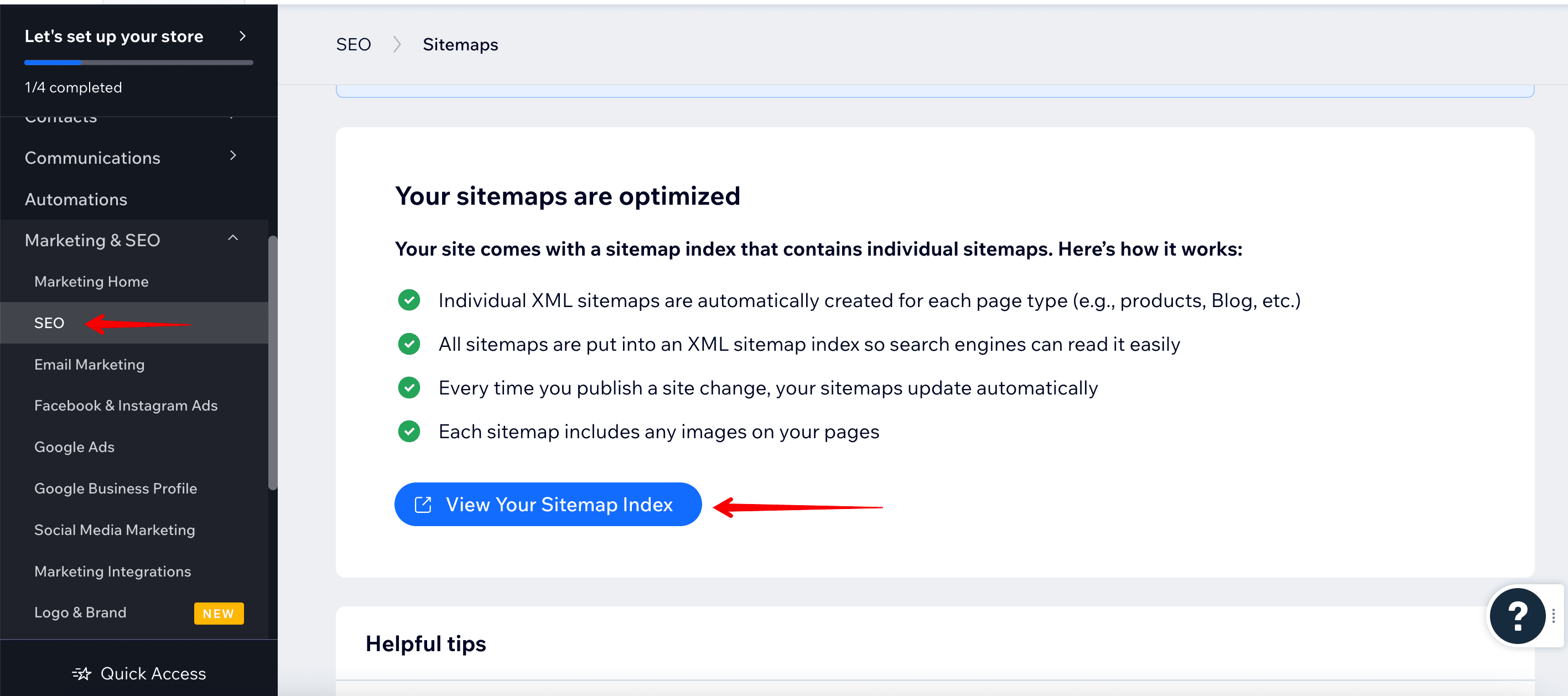
It’s also useful to have a robots.txt file on your site. It provides guidance to search engines regarding which pages they should or should not visit. While it doesn’t offer an absolute guarantee that search engines will adhere to these directives, it plays a significant role in reducing crawling and, in the end, indexing efforts in restricted content areas.
Your Wix website includes a robots.txt file that you can view and customize. Here’s how:
- Go to the SEO section.
- Select Go to Robots.txt Editor under Tools and Settings.
- Click View File.
- Add your robots.txt file info by writing the directives under This is your current file.
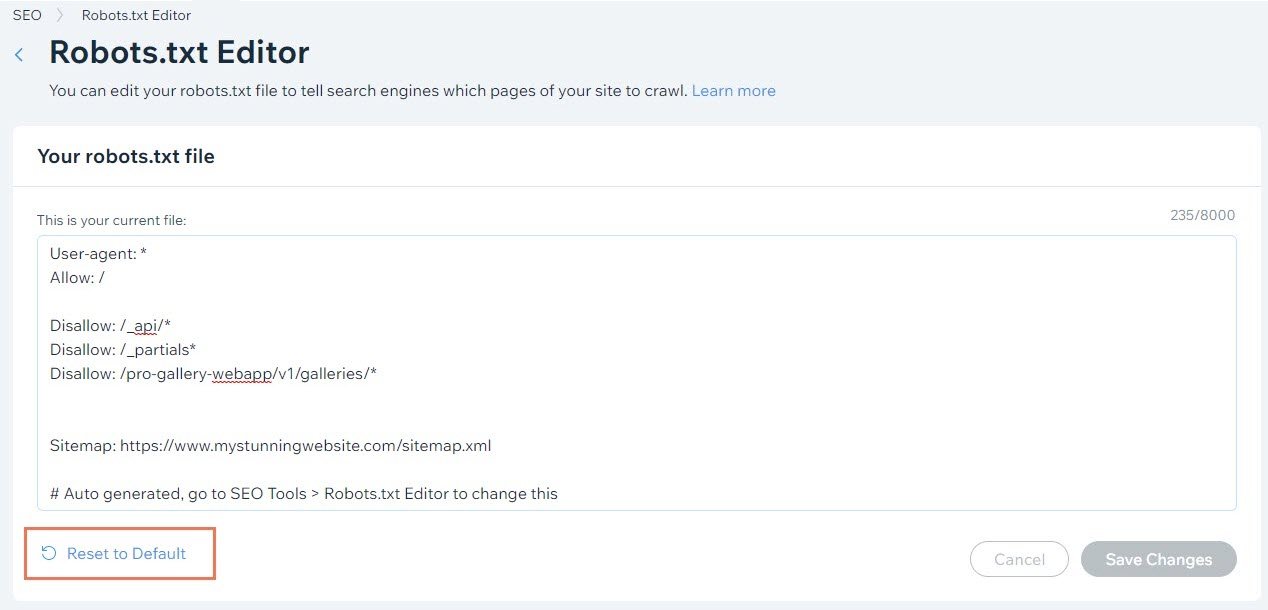
Wix creates the robots.txt file automatically, but if you prefer to generate it yourself, you can use this free robots.txt generator. Then, you can check it with this robots.txt tester tool.
Work with URLs
Wix only lets you edit the URL slug, which is the final part of a page’s URL address. Utilizing user-friendly and descriptive URL slugs helps Google understand your page’s content. It’s also good for user experience.
It’s easy to change your URL in Wix. Here’s how:
- Click Menus & Pages on the left side of the Editor.
- Select the page.
- Click the More Actions icon.
- Select the SEO Basics option.
- Change the page URL.
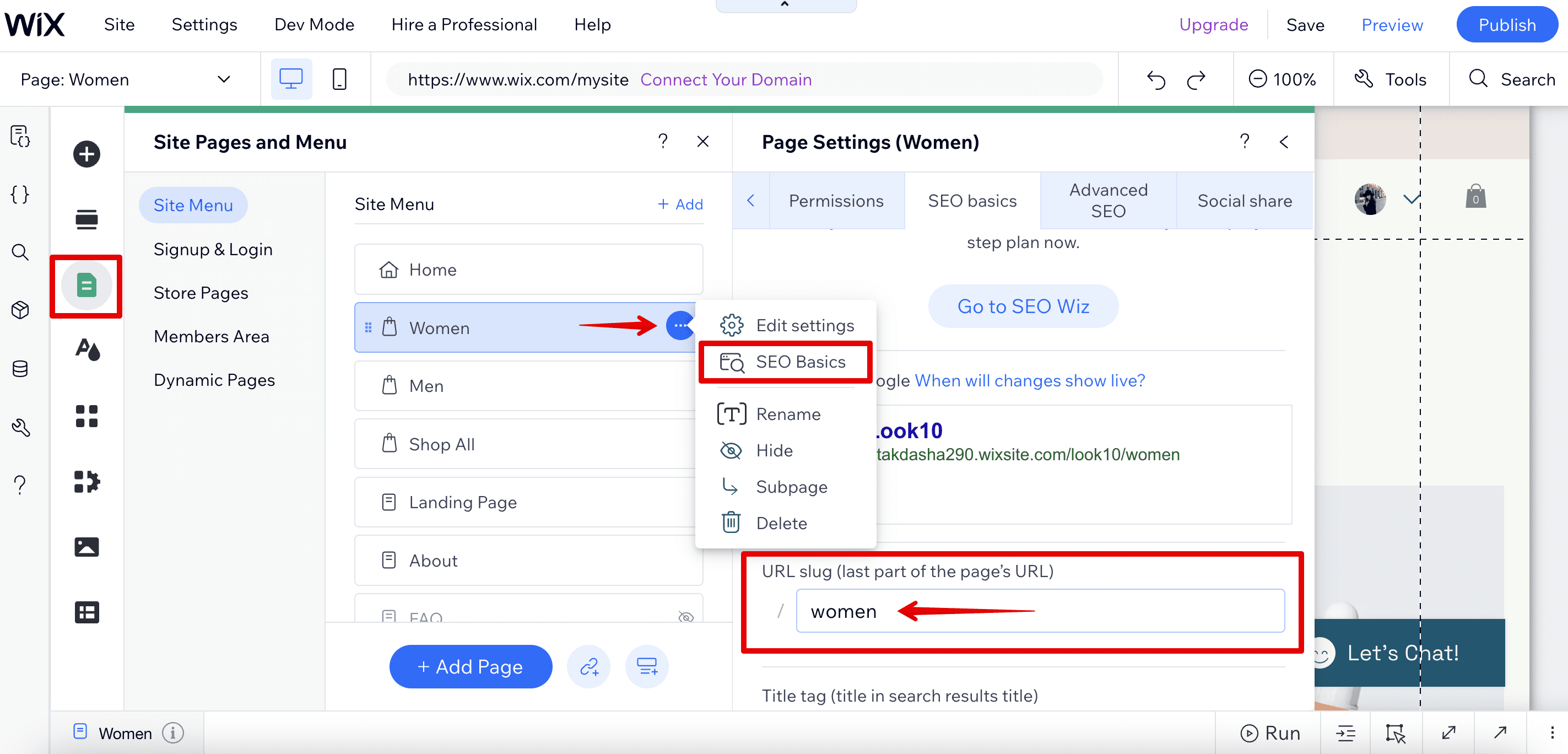
If you change the page URL of a published site, search engines treat the new URL as a completely new page, and your old URL no longer works. SEOs often use redirects to address this issue.
Setting up 301 redirects
Using 301 redirects prevents users and Google from landing on empty or irrelevant pages. When you modify the URLs of existing pages, redirects preserve the traffic and PageRank of old URLs.
To configure 301 redirects in Wix, access the SEO section and go to the URL Redirect Manager. Next, click on Create New Redirect. You can set up either a single URL redirect or a group redirect before inputting the old and new links.

From here, you can use a bulk redirect checker to verify if your website redirects are correctly configured.
Change canonical tags
If you have multiple URLs with identical content, it’s important to instruct Google which one is the primary version to index. This prevents duplicate content issues, which would otherwise lead to lower search performance or even penalties.
Also, even though Wix automatically generates default canonical URLs for all your pages, you might need to make adjustments.
Here’s how to modify canonical tags:
- Go to the Site Menu & Pages section in the Wix Editor.
- Select the page and click the button with three dots.
- Go to the SEO Basics section.
- Navigate to the Advanced SEO tab.
- Within this tab, expand the Additional Tags menu, find the canonical row and click the button with three dots and select Edit.
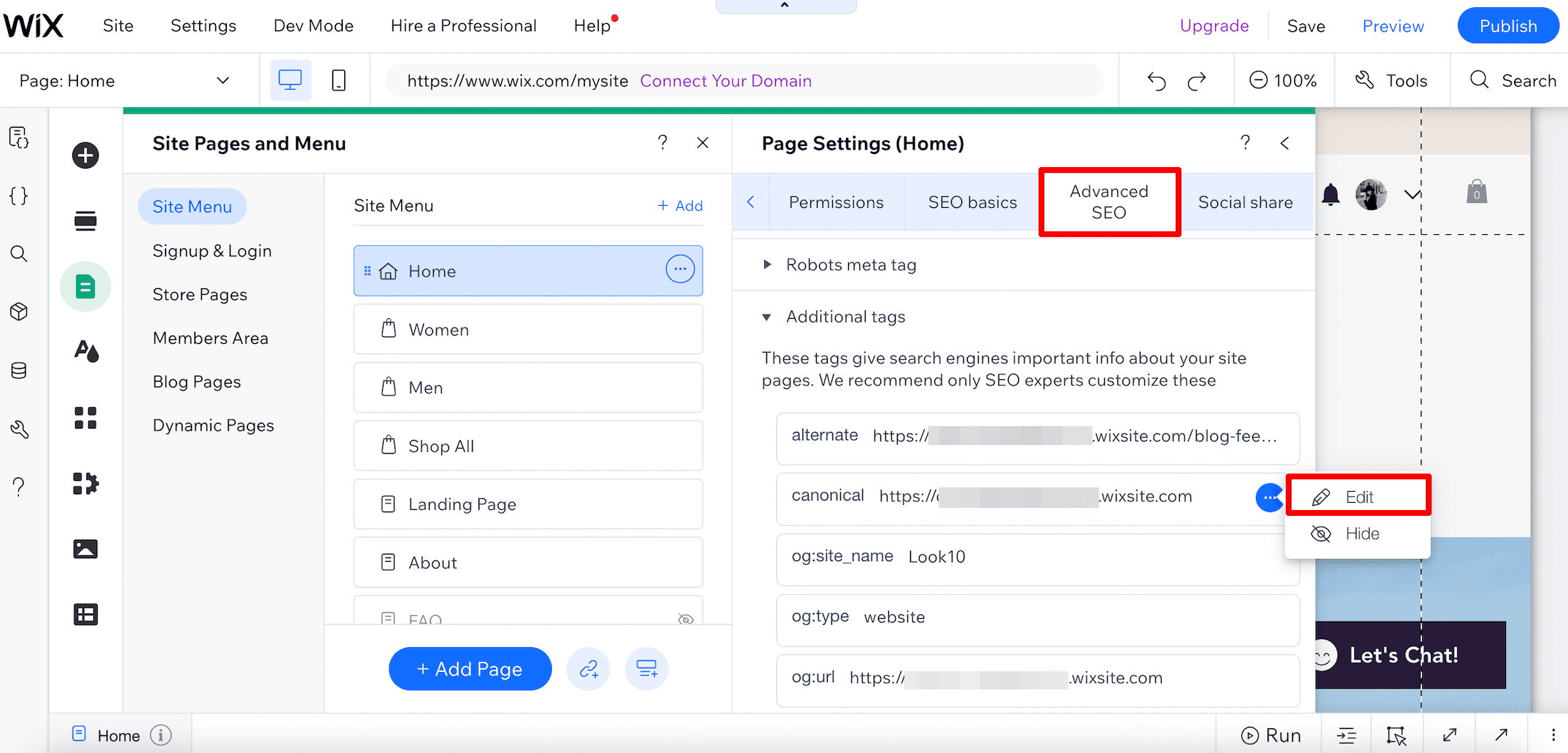
Then, write your desired canonical URL and push the Apply button.
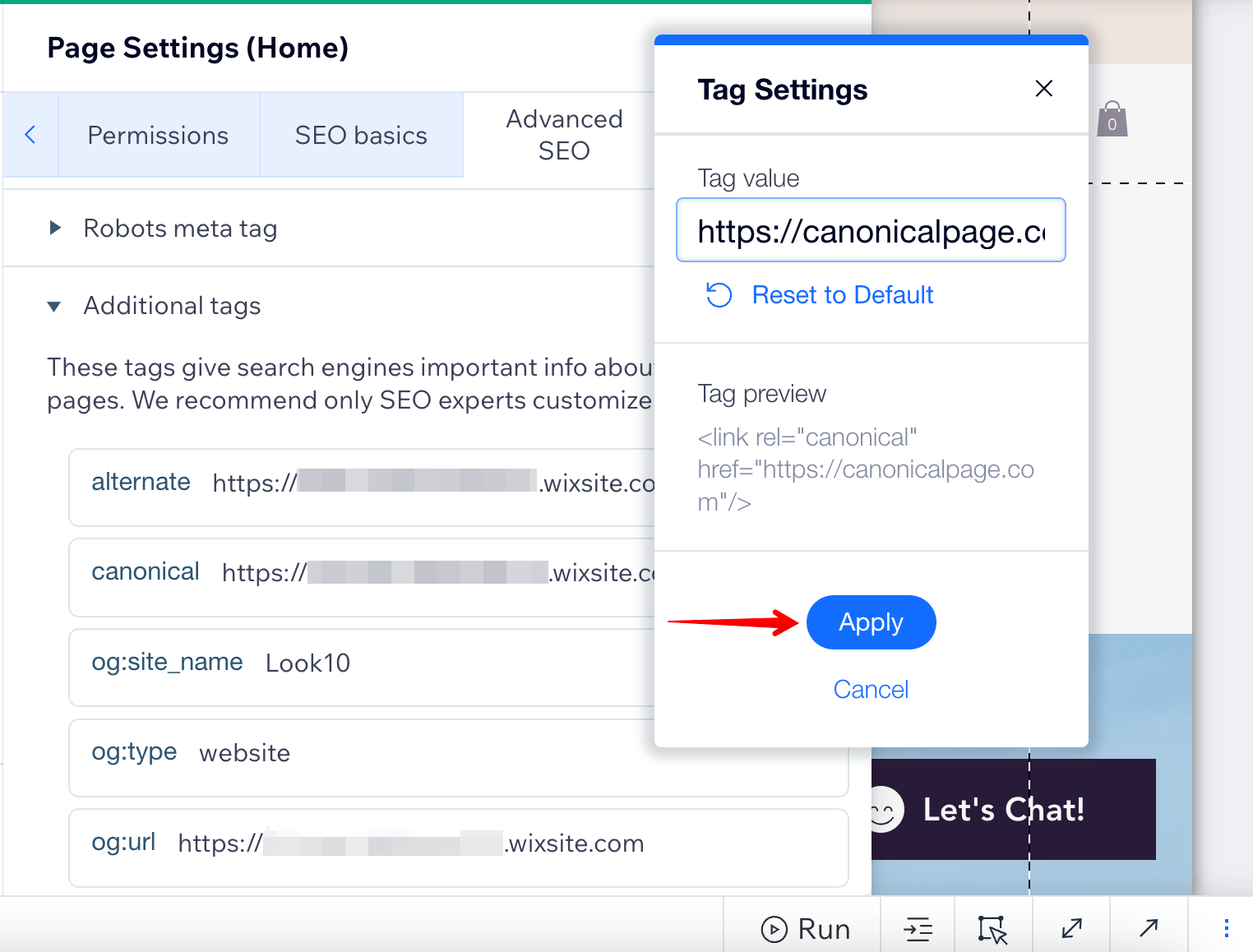
Check indexation
While your Wix website may be finely tuned for optimization, nothing good can come of it if Google cannot index it. This is why you need to inspect your index status and make essential adjustments regularly.
To check your page indexation status, go to the SEO section and choose the Site Inspection option.
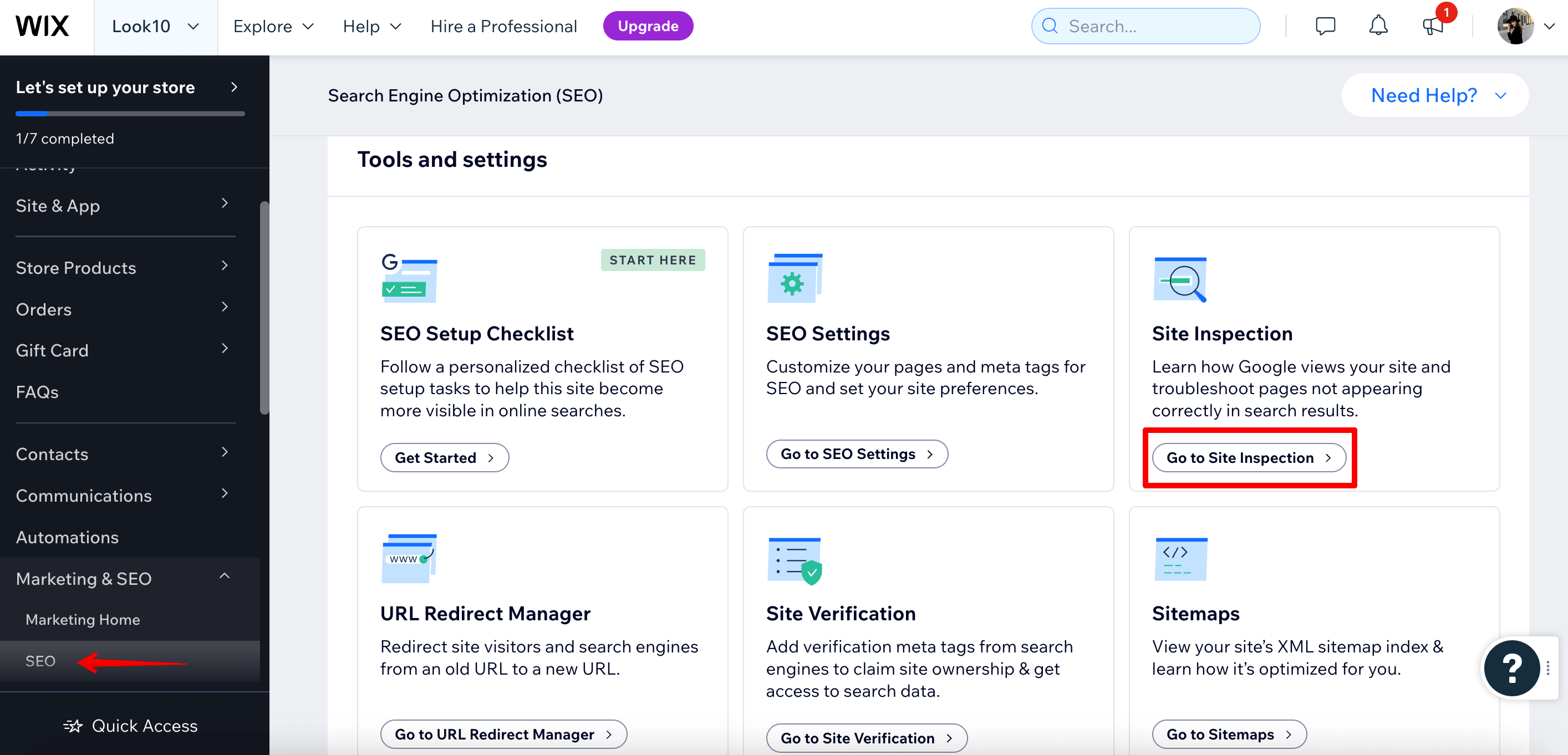
The main dashboard of this Site Inspection report provides an overview of the index status. It presents the number of pages on your website that are indexed, excluded, or experiencing issues.
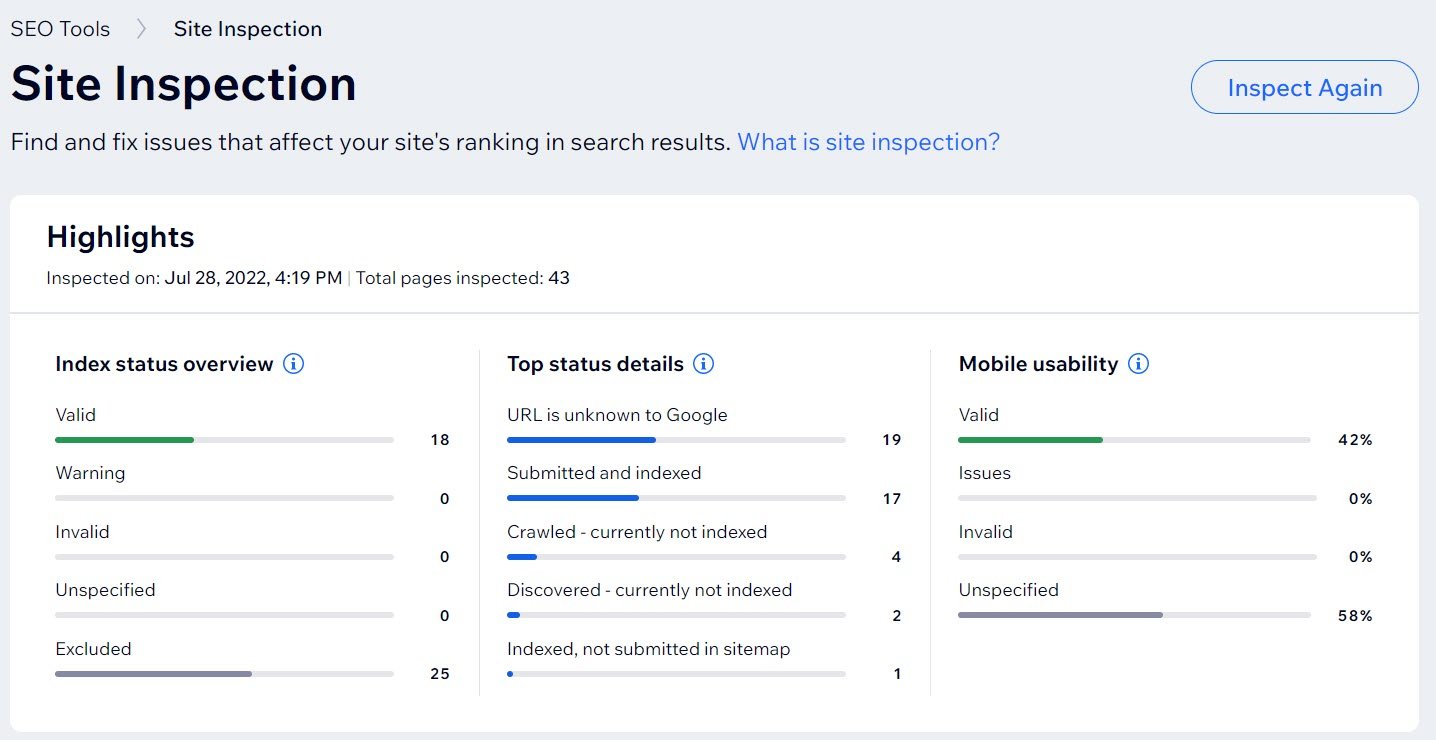
In the Full Report section, you can view a table that contains every one of your pages and each of their index statuses.
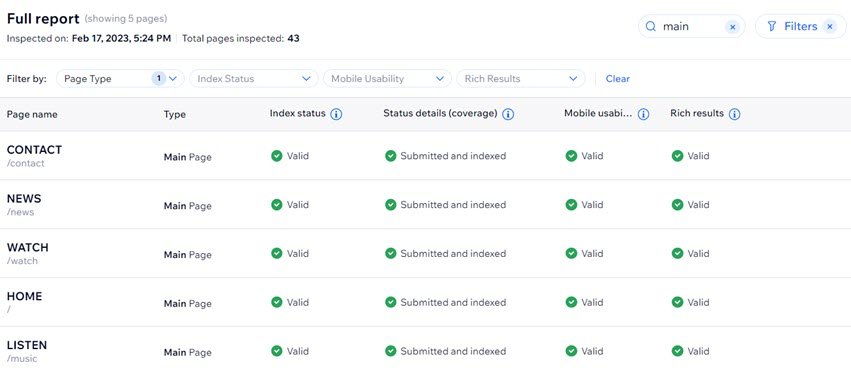
To learn more about each status, read the Wix guide.
Run regular website audits
Authoritative sources, including Google’s documentation, explicitly state that a website’s quality significantly influences its position in search results. You can assess your website for potential issues hindering user experience. Just perform a technical SEO evaluation and consider factors like site speed, security, mobile-friendliness, crawlability, and more.
Specialized tools like Website Technical Audit are great for this. The tool covers over 120 site parameters, all grouped into 16 categories. Website Technical Audit provides detailed reports on technical SEO issues and offers practical tips for resolving them.
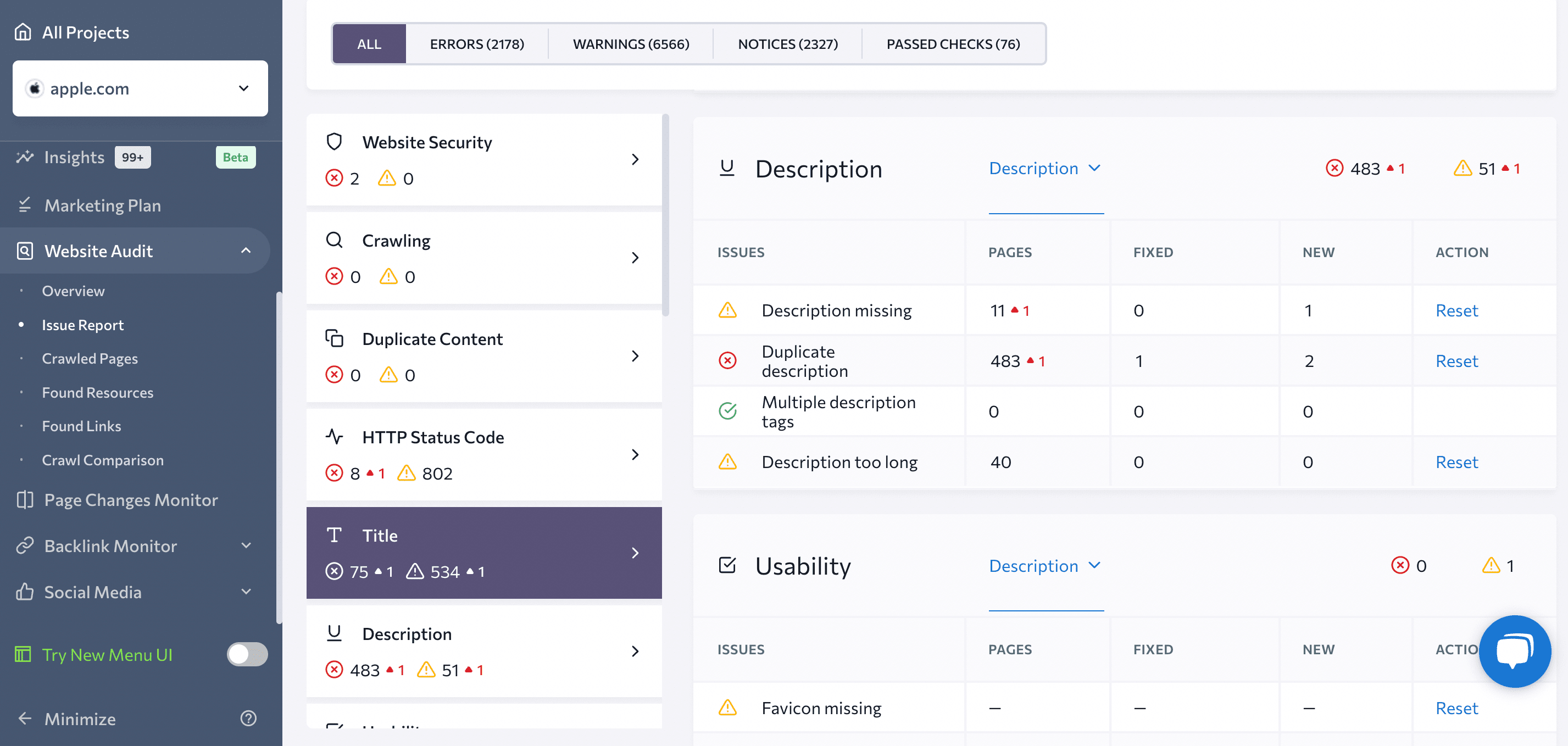
Connect Google Search Console & Google Analytics
Working with Google Search Console and Google Analytics is an integral part of a successful SEO strategy. GSC helps you monitor your website’s performance in search engine results, while GA helps you discover who your visitors are, how they found you, and how they interact with your website.
Connecting your site to GSC will automatically get your website verified on Google. It will also allow Wix to submit your sitemap for faster indexing. Navigate to the SEO section and click the Connect to Google button in the Site Performance on Google tab.

In Search Console, click the Start Now button (or Add property if you’re already using GSC for other websites), and enter your website address into the URL Prefix window.
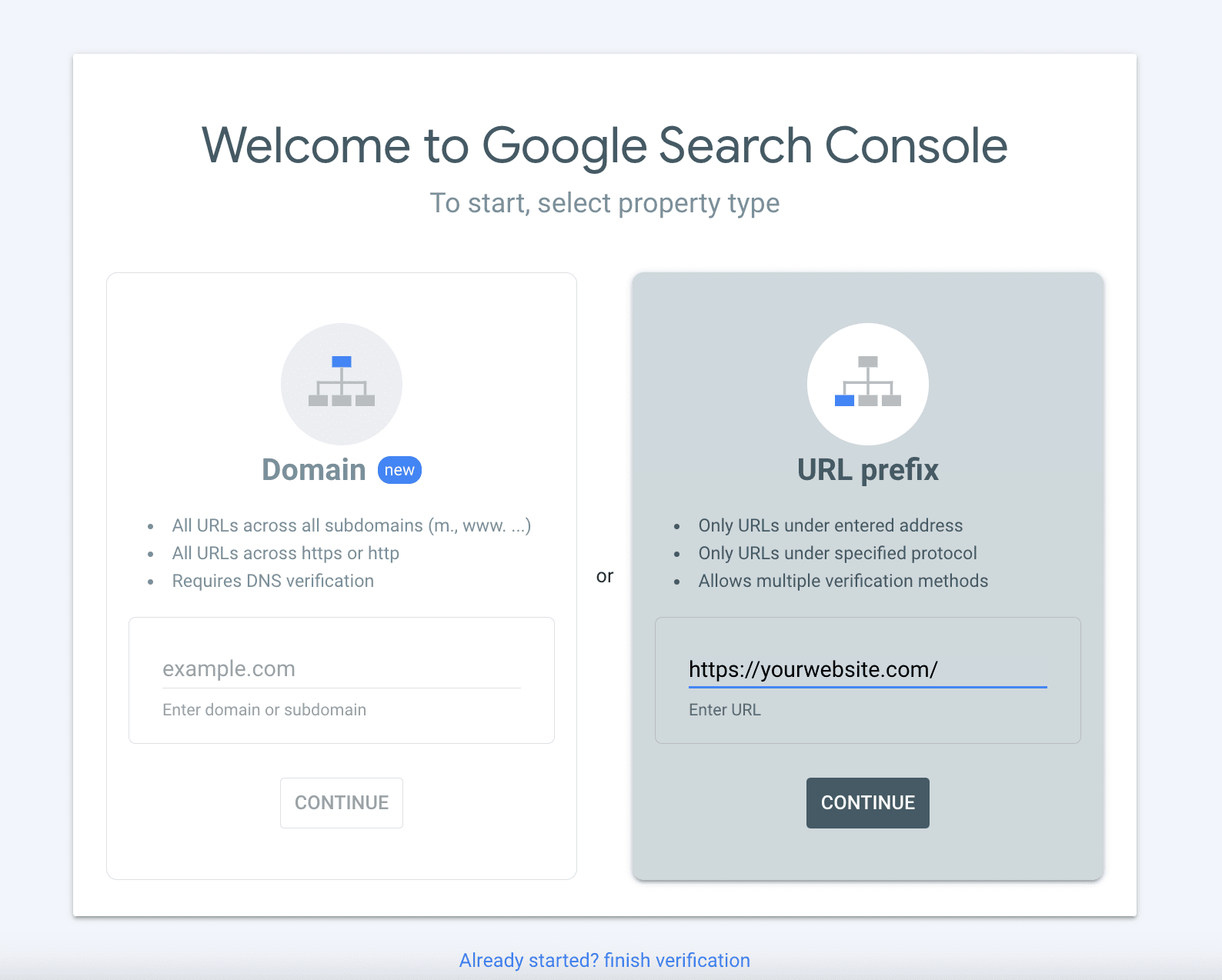
Next, select a verification method. For Wix websites, it’s recommended to use the HTML tag option. Click to expand this option and then copy the verification meta tag provided.
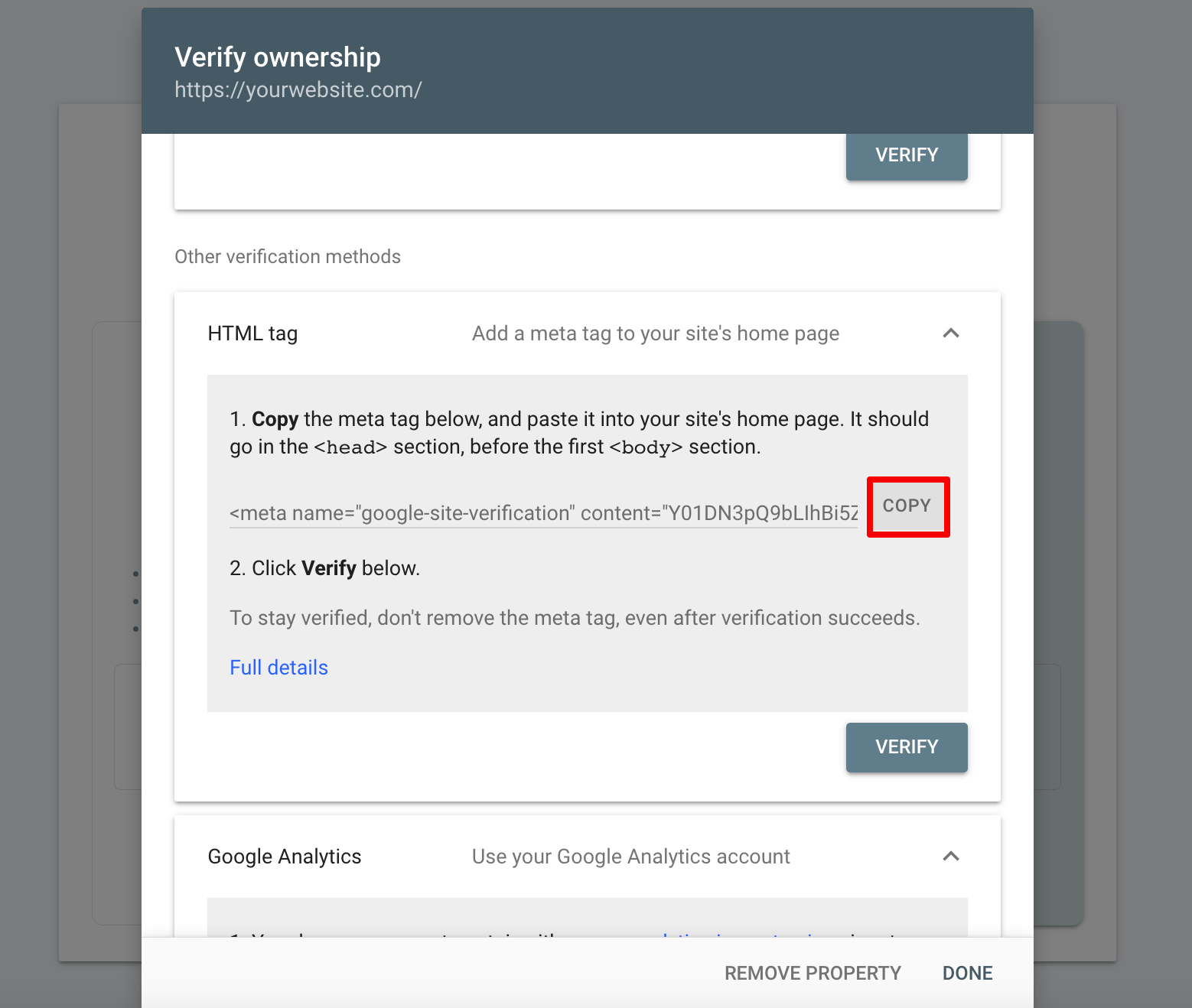
Now, return to your Wix dashboard. Navigate to the SEO section ▶️ Site Verification ▶️ Google Search Console, and paste the meta tag you copied from GSC into the designated field.

Click Save. To complete the process, return to Search Console and click Verify. You can now access GSC data directly within Wix.
You can also integrate Google Analytics with Wix. Note that this feature is only available if you have a Premium plan.
Navigate to the Marketing Integrations section, then click the Connect button in the Google Analytics section. It will take you to a list of step-by-step instructions on how to link your Google Analytics account. This involves setting up a Google Analytics Property ID and adding it to your website on Wix. Refer to Wix instructions to learn more.
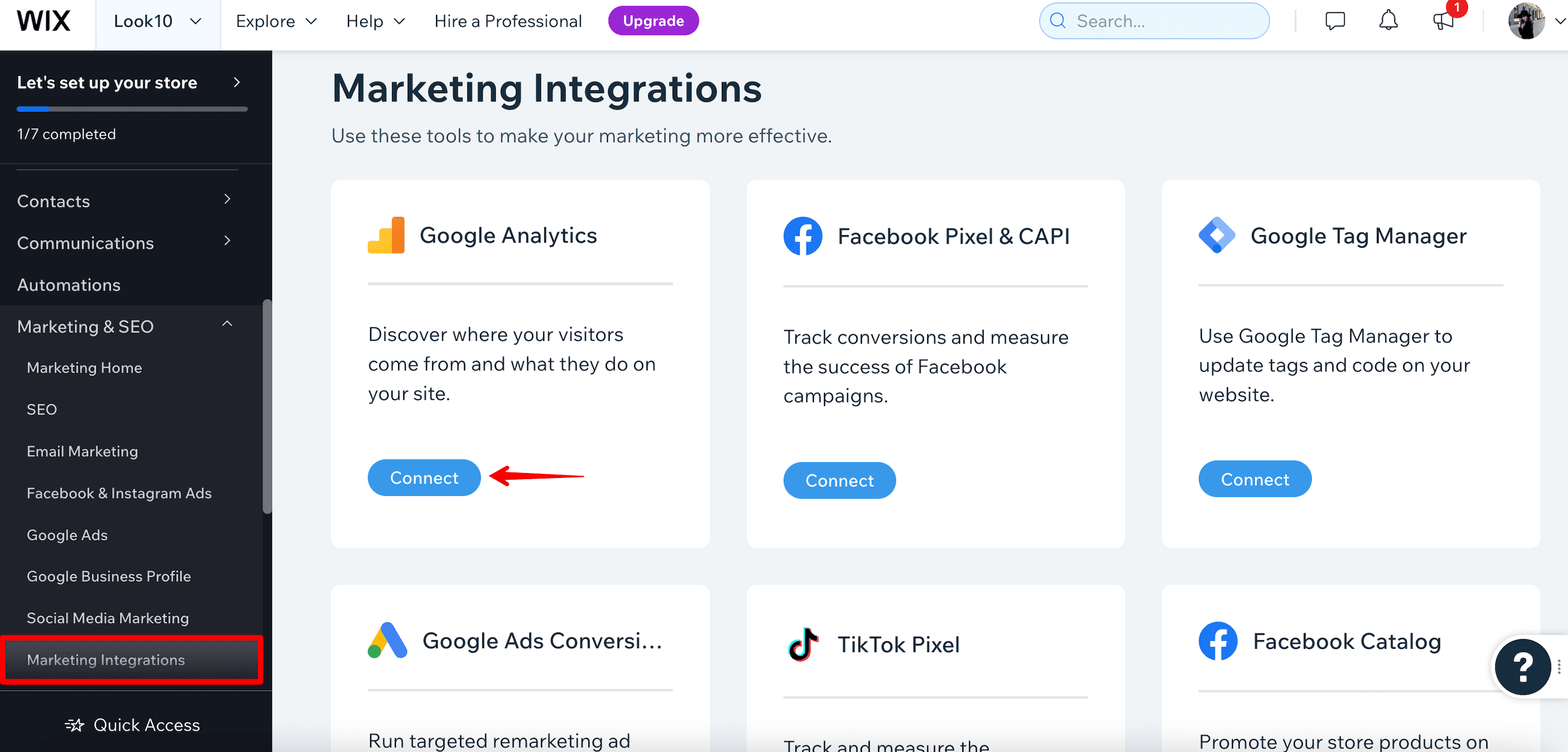
Wix on-page SEO checklist
On-page SEO also plays an essential role in running successful SEO campaigns. It helps you improve both your site’s user experience and rankings. On-page SEO is all about working with content, titles, meta descriptions, H1 tags, internal linking, and images. You can assess all these elements and factors using the On-Page SEO Checker.
Make sure your content is optimized for keywords and their intent
Optimizing your content involves understanding what users are looking for and strategically using keywords to improve search visibility. Balancing these factors is essential for driving organic traffic and achieving SEO success.
Integrate relevant keywords naturally within your content, ensuring they align with the user’s intent. Keywords should be present in titles, headings, body text, and meta tags.
The SE Ranking app in Wix is great for working with keywords and user intent per query. It has both a Competitive Research and Keyword Ideas tool. You can access the SE Ranking app within the Wix App Market, and once installed, you’ll find it in the side panel of your Wix dashboard.
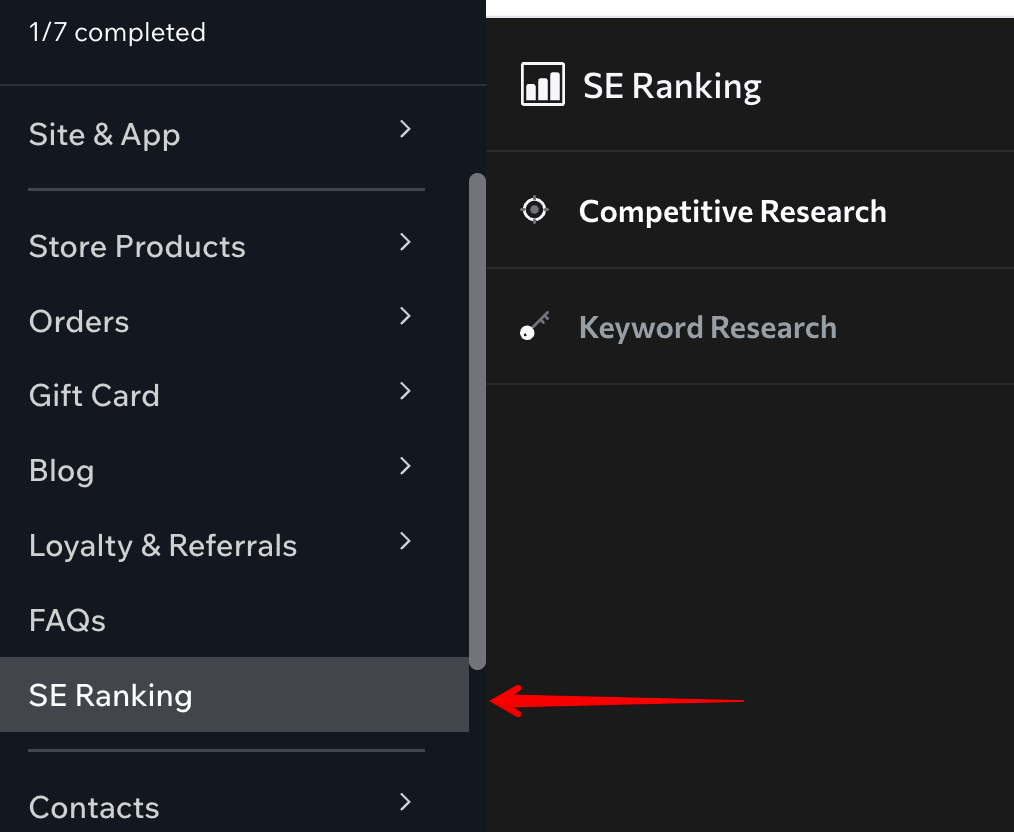
The SE Ranking app can improve your SEO strategy by assisting you with creating and expanding your keyword list. The Competitive Research tool offers the most profitable keywords from your competitors, each of which can be added to your list. Simply enter your competitor’s domain and navigate to the Keywords section.
You can use various filters to refine your keyword list. For example, you can filter keywords by a specific search intent or remove competitors’ brand requests to find the most relevant ones for your needs.
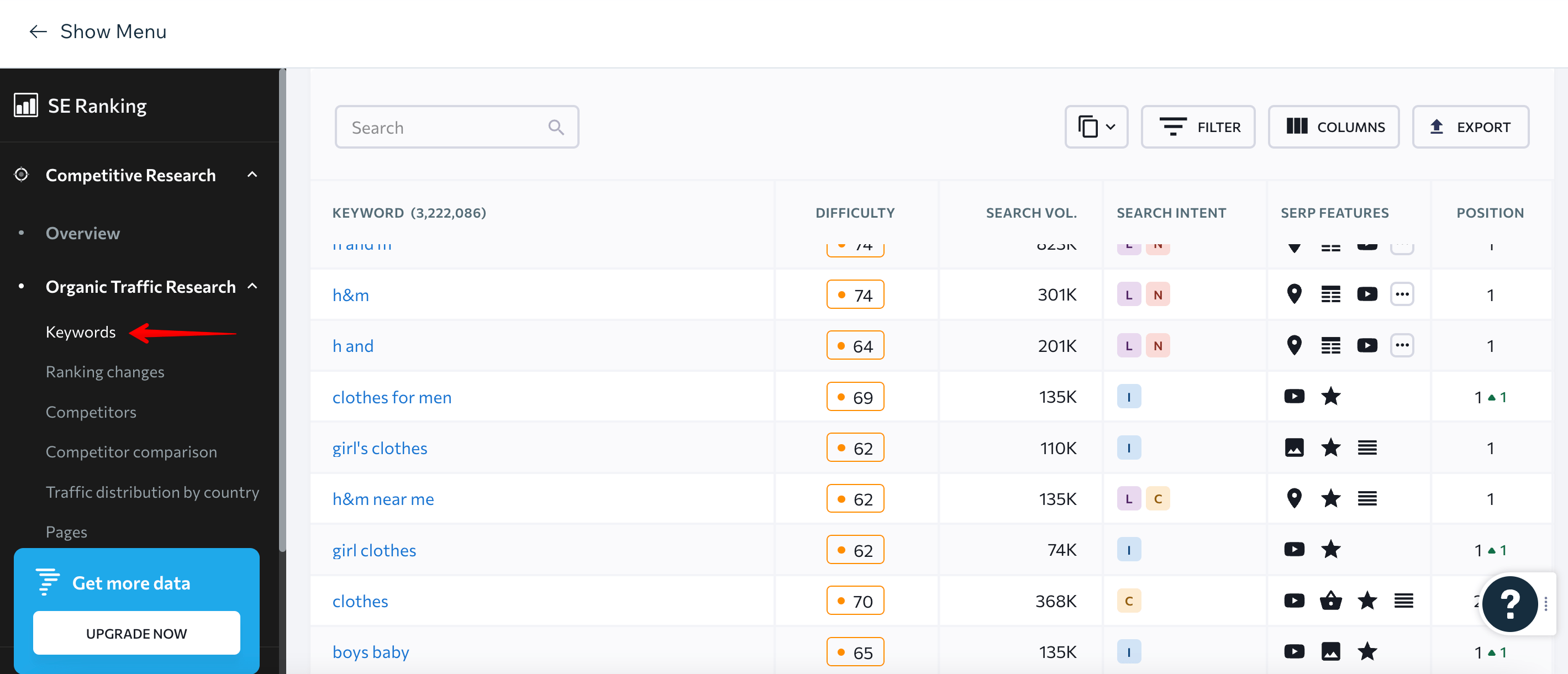
By entering the seed keyword into the Keyword Research tool, you can discover similar, related, and long-tail keywords. These will be paired with all the essential metrics for your target market, including difficulty, search volume, CPC, user intent, and more.
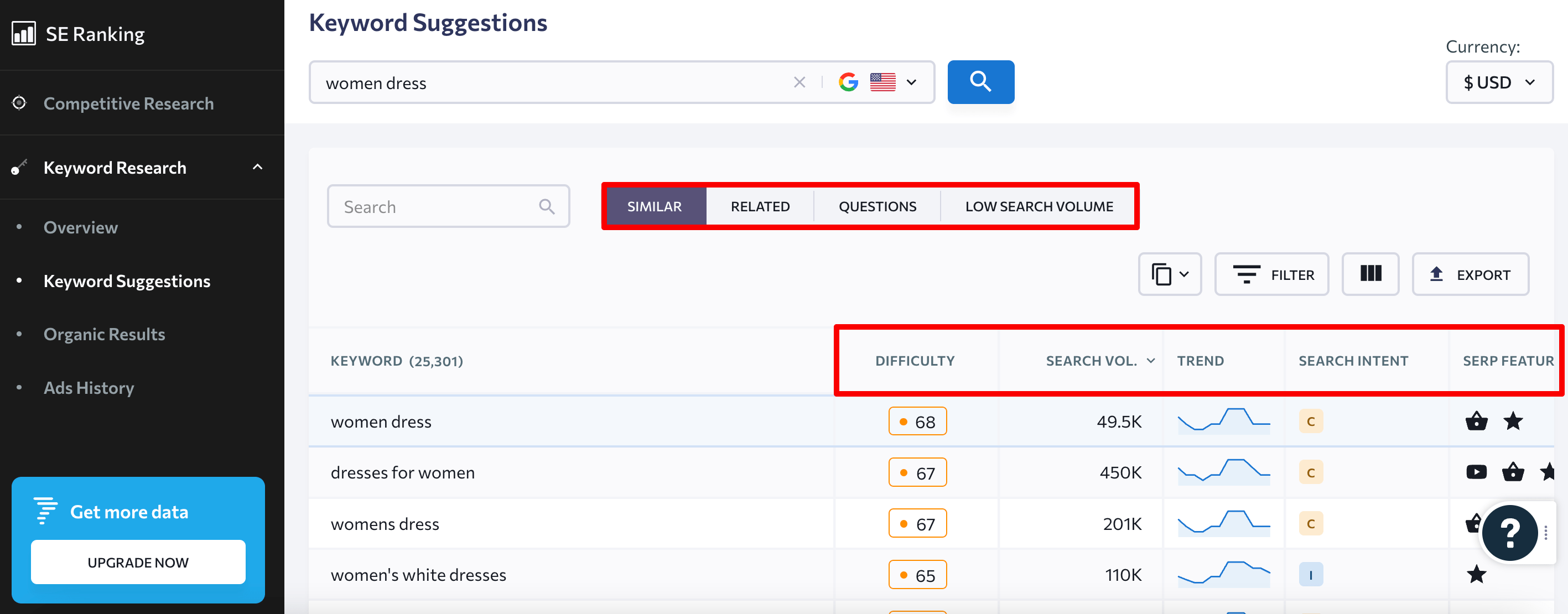
For more advanced tips, explore our comprehensive guide on how to do keyword research.
Next, you can integrate these keywords into your content with the assistance of SE Ranking’s Content Marketing Platform. This platform will help you find topic ideas and create detailed briefs and texts from scratch. It also allows you to assess the quality of each written text and optimize it for search. Not to mention, it uses modern AI technologies to expedite the process.
Once your content is prepared, upload it to your pages in the Wix Editor. Just select the page and paste the text.
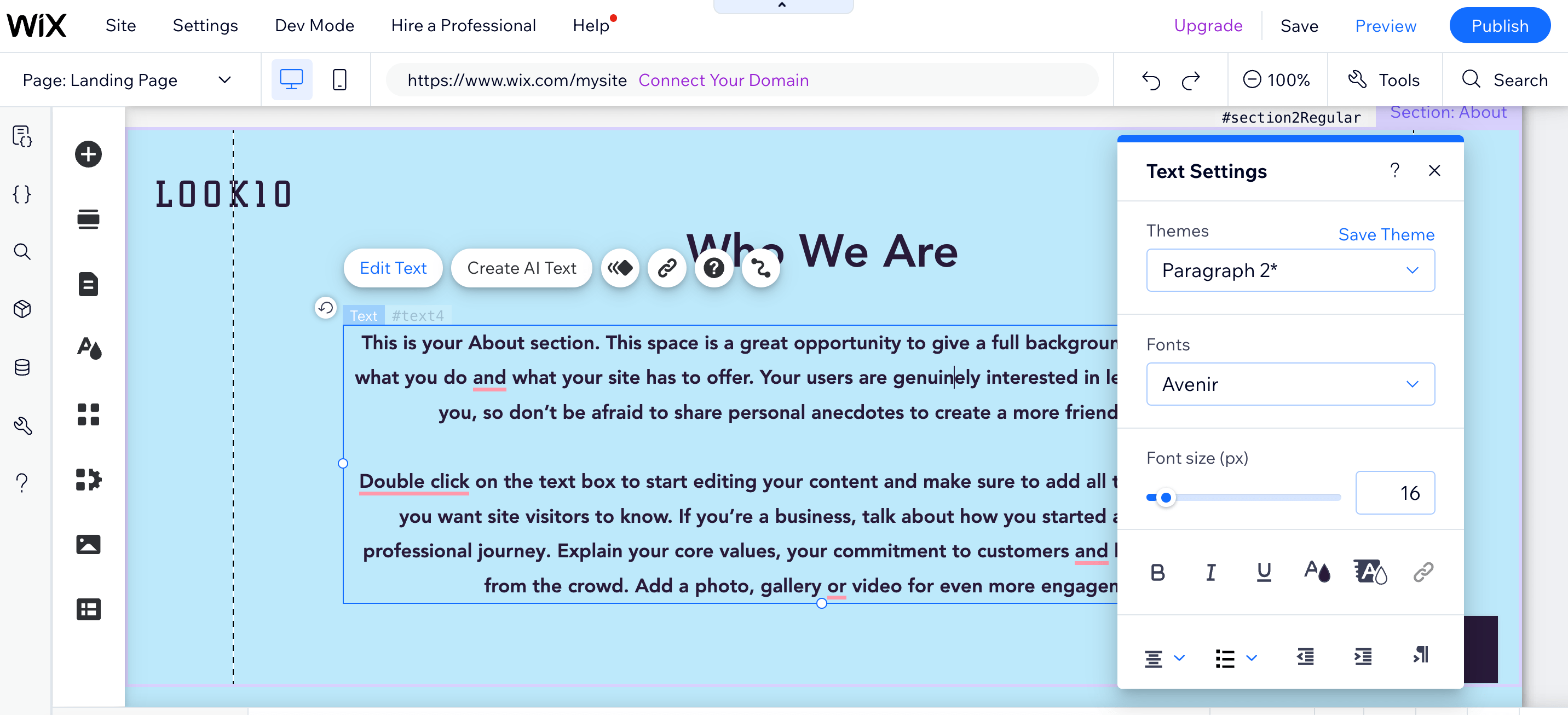
If you operate a blog, navigate to the Blog section, click on Create Post, and begin working on your content. Make sure your articles are optimized as nicely as the landing pages.
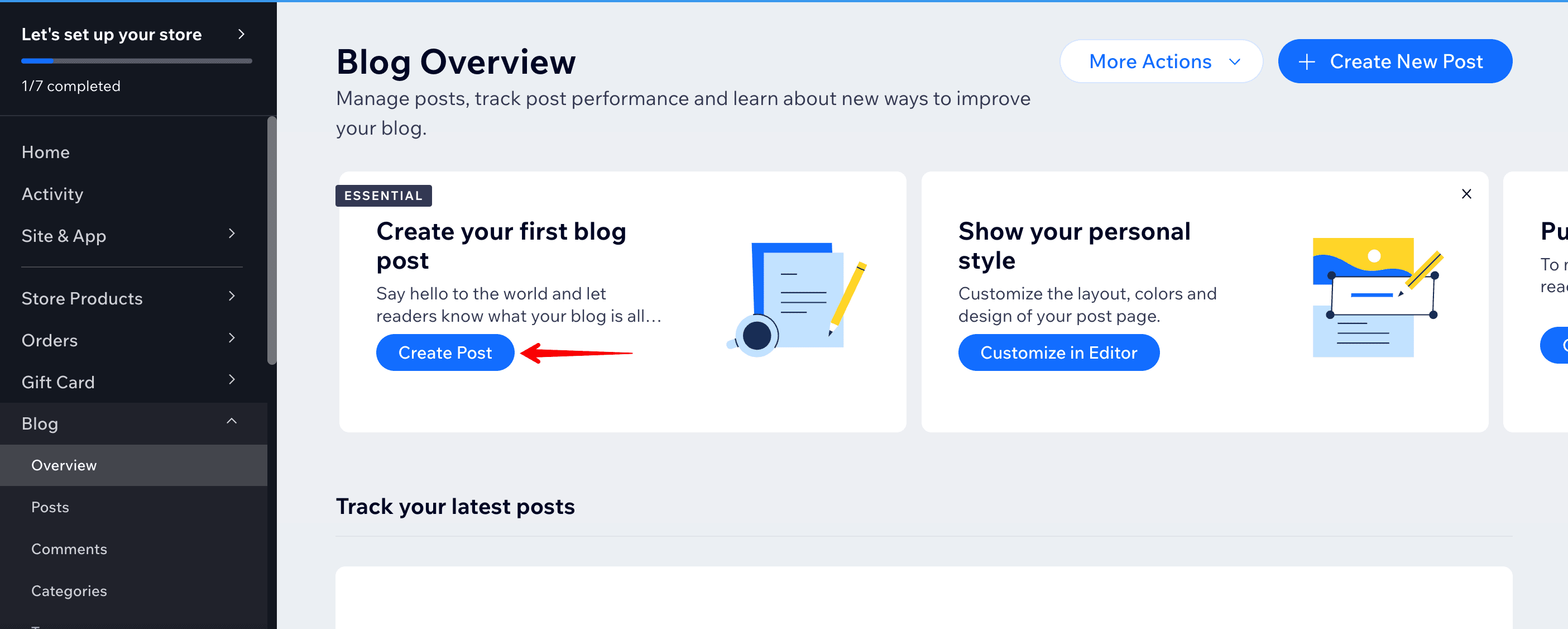
You will find all the essential tools and features for working with text and media.
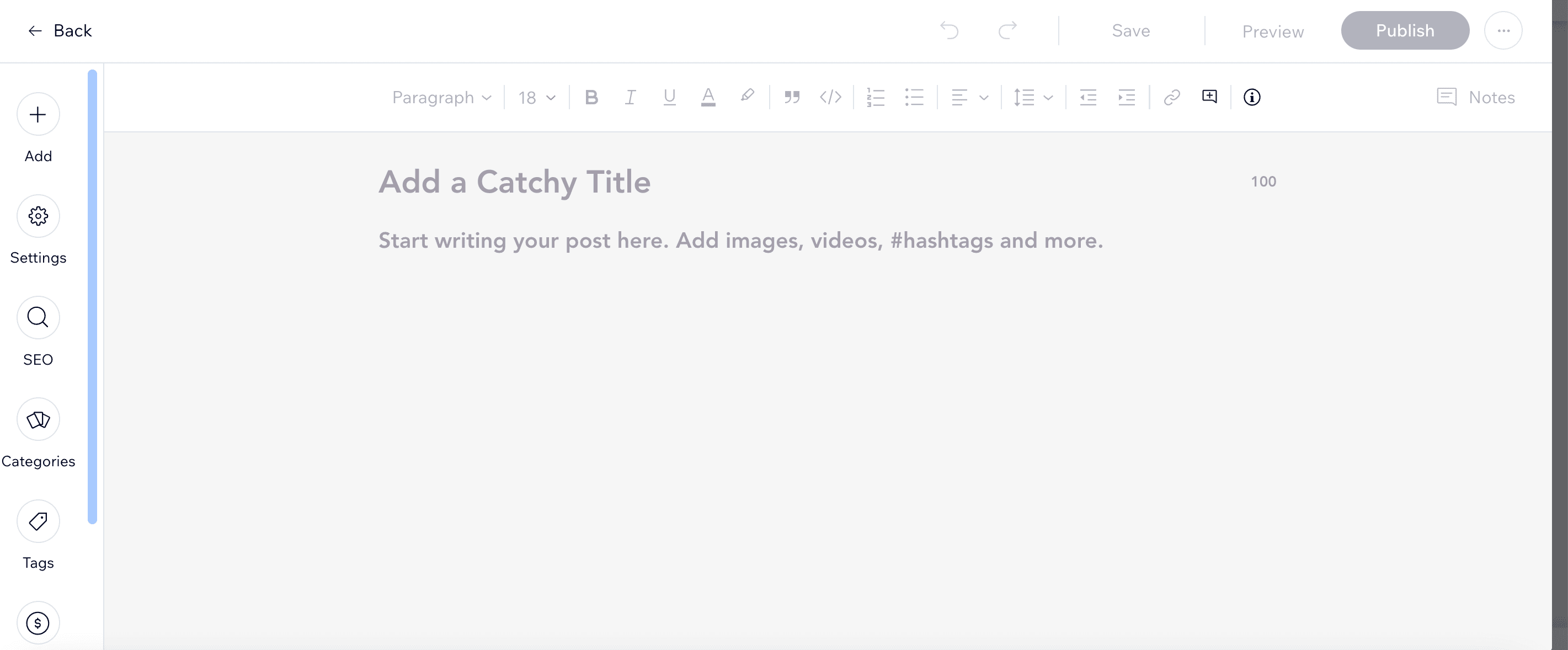
Add title tags and meta descriptions
Every page on your site needs a unique and optimized title tag and meta description, which tell users and search engines what your page is about.
To add the tags in the Wix Editor, follow these steps:
- In the left-hand menu of the editor, click Site Pages and Menu.
- Find the page you want to edit in the list.
- Click the three dots next to the page title.
- Select SEO Basics from the menu that appears.
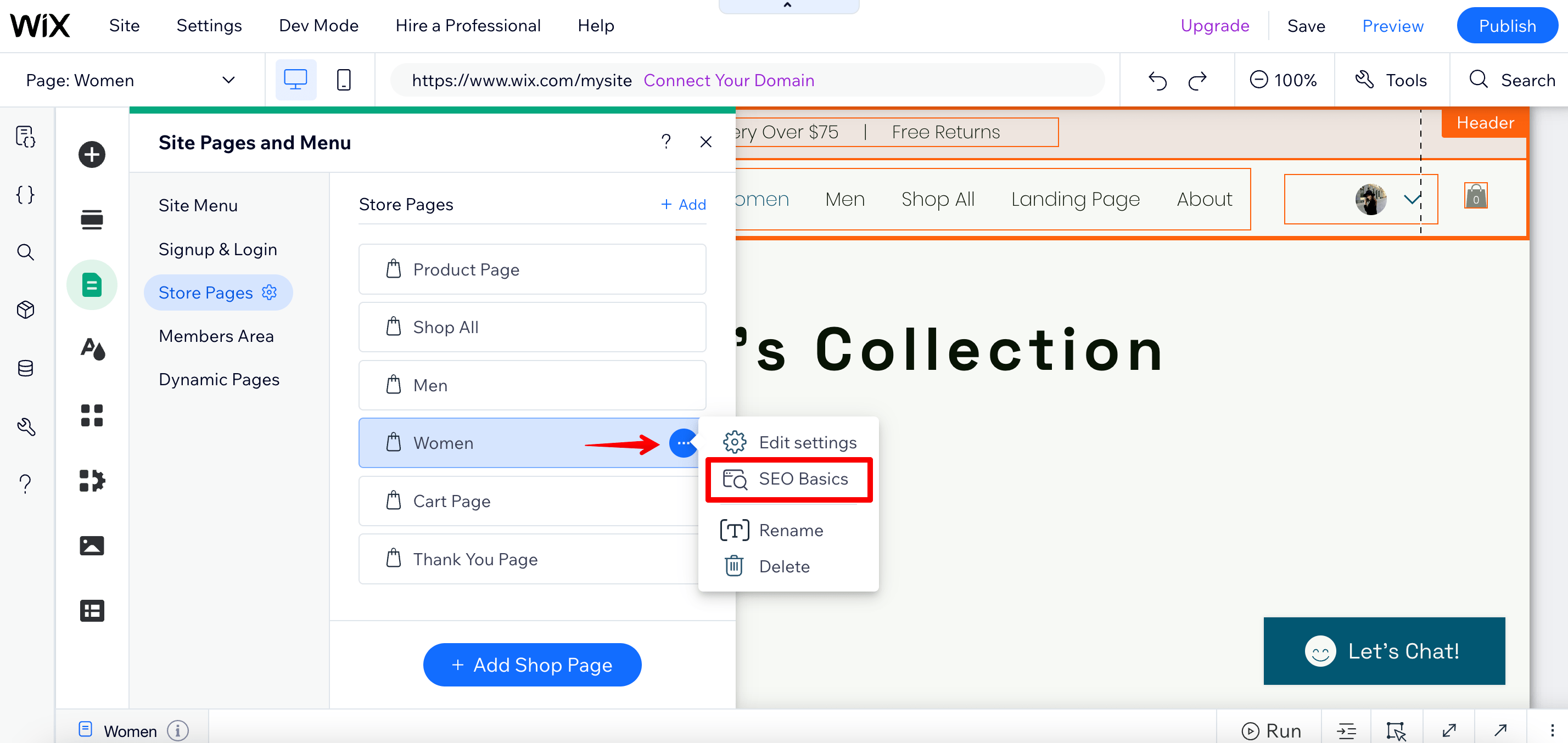
This is where you can edit your title tag and meta description. You’ll see a preview of your search snippet on Google after doing so.
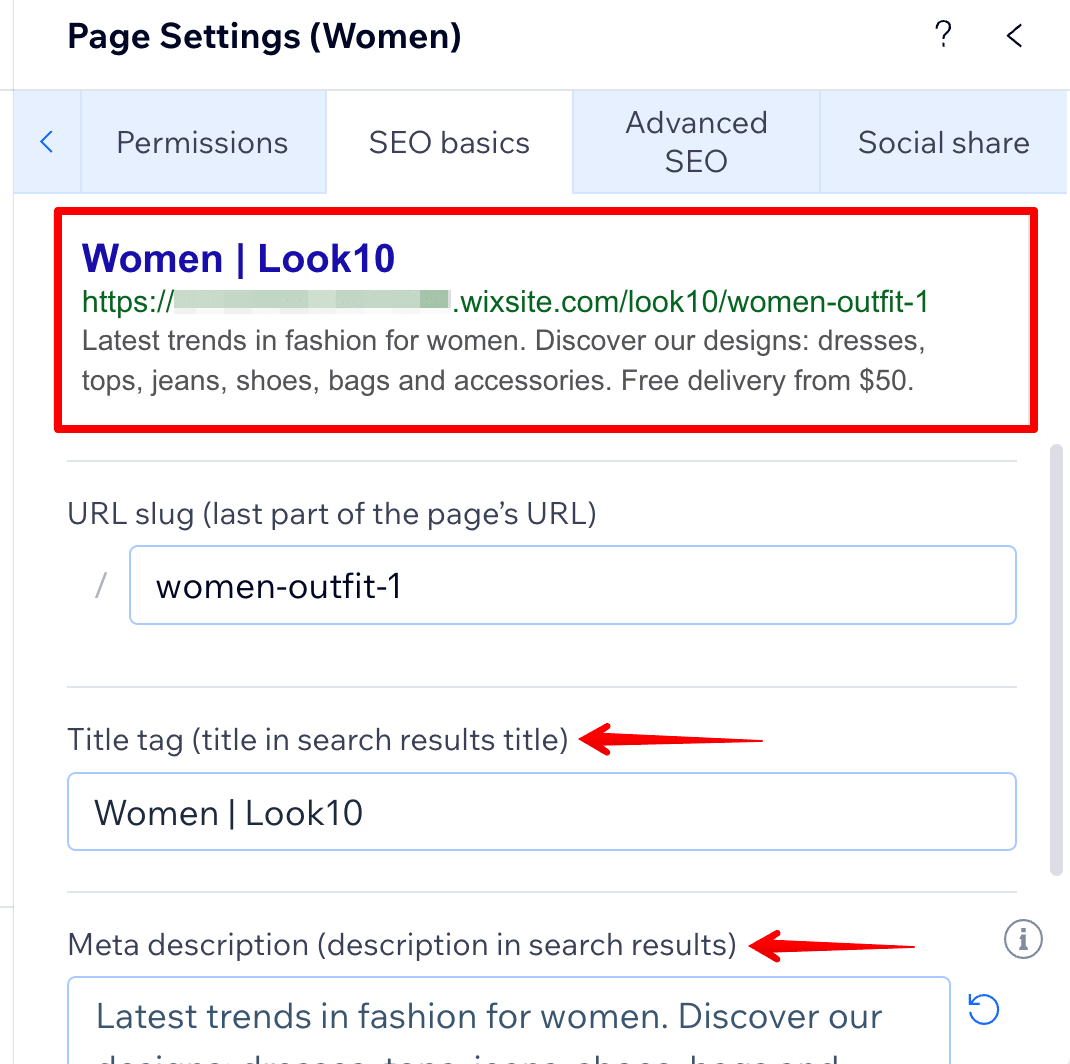
Remember, when creating titles and descriptions for your content, there are rules you must follow. For instance, Google cares about the snippet’s uniqueness. You also need to keep an eye on its length to prevent the snippet from being cropped on the SERP. You can find detailed guidance on these rules in our guide on title tags and meta descriptions.
You can also use AI Writer if you want to make your life easier. This tool can help you generate personalized drafts for your titles and descriptions.
Add internal links
Effective internal linking helps Google find and crawl a website’s pages. It also empowers you to improve your page rankings through the passing of authority and link juice. You can enhance the value of weak pages by connecting them with stronger pages.
In Wix, most of your pages are automatically linked appropriately. For example, when you add a new section, a link to it automatically appears on your homepage.
However, you’ll still need to set up links manually when creating a custom page from scratch. Just open the Wix Editor, select the page you’re working on, click on the element (or add a new one) that you want to use for linking to another page, and then click the link icon:
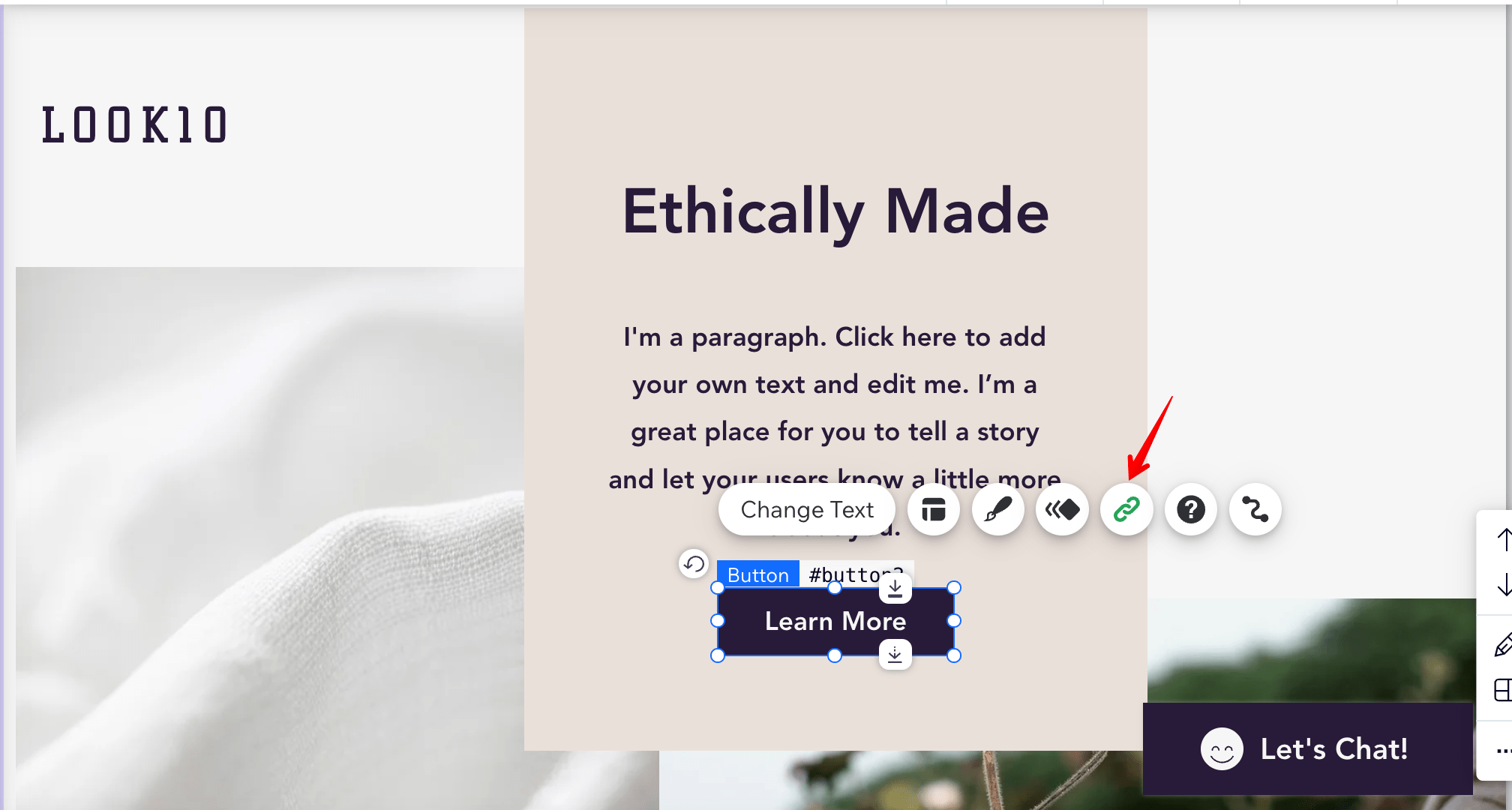
Set up linking options. Choose a destination page, decide whether it should open on a new page or not, and specify rel values if needed.

If you want your link to be nofollow, add rel attributes to the Advanced SEO Settings menu.
Don’t forget that your internal anchor texts should look natural and align with the content on the page.
Optimize your website images
Visual content serves a dual role. It impacts how users perceive and engage with a page while also having the potential to enhance visibility in search results. If you want to optimize images effectively, resize them correctly (possibly compress them) and don’t forget to add descriptive alt text. You can find comprehensive strategies in our detailed image SEO guide.
In this section, we’ll focus on the importance of alt text. Alt text is useful for people using screen readers. It also helps search engines understand your visual content, improving its ranking in image searches. In Wix, you can add alt text in just two simple steps:
- In the Wix Editor, select the image you want to optimize.
- Navigate to Settings and provide a concise description in the What’s in the image? Tell Google box.
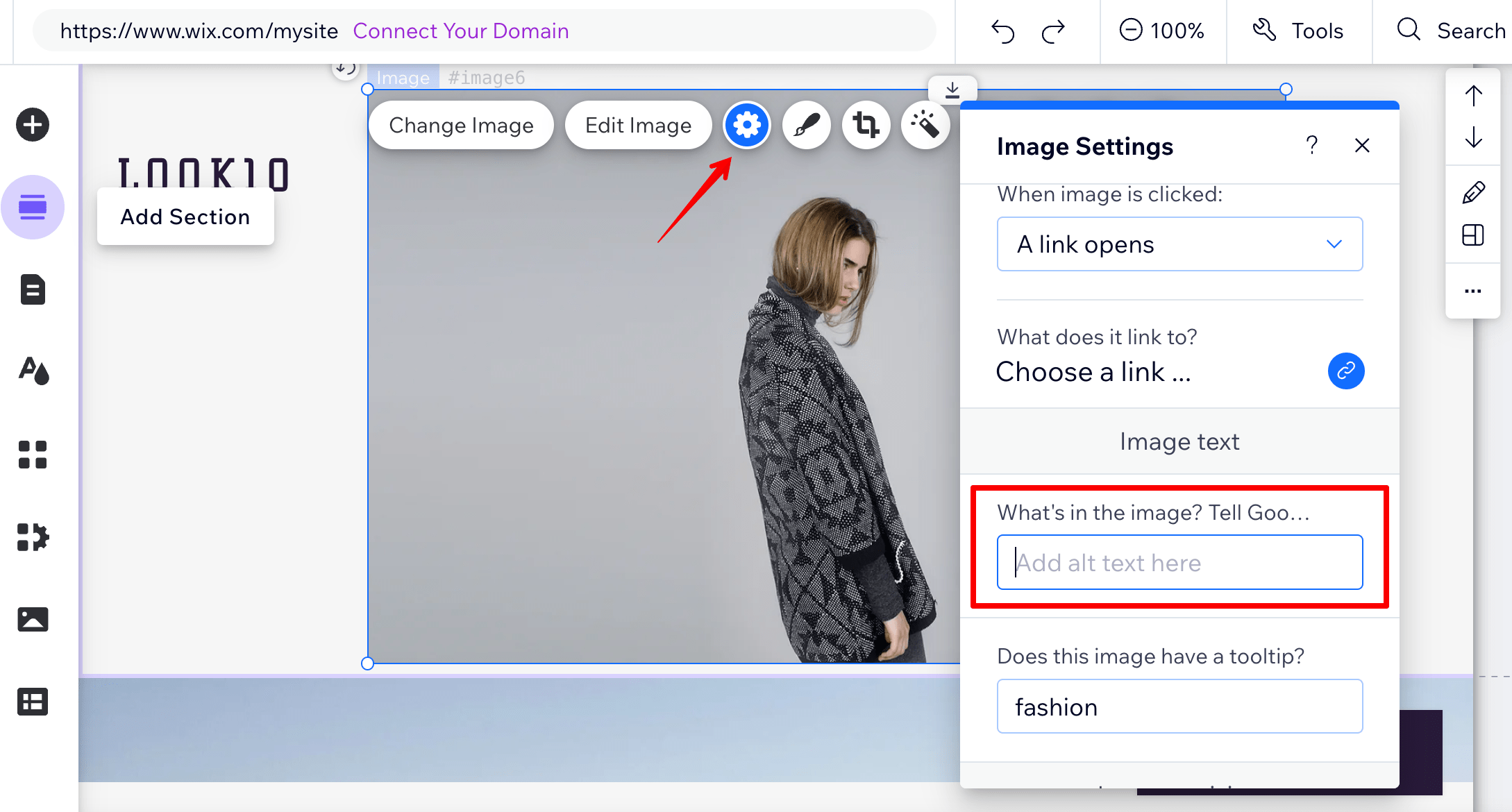
Remember: non-informative text in the alt attribute can harm your SEO. This is because search engines won’t receive crucial cues about the content without useful information.
Add schema markup to your pages
Schema markup helps Google understand the content and context of your page, enabling it to present your page better in search results. For instance, Schema is what actually stands behind rich snippets, so you need to add it to your pages to improve your chances of receiving more clicks from SERPs.
One advantage of Wix is its built-in Schema markup for various page types, including blog posts, products, courses, events, and forums. All you have to do is fill the page with content, and Wix will take care of the rest.
If you need to add markup to other pages, Wix’s Editor is pretty straightforward about this. Simply follow these steps:
- Go to Site Pages ▶️ Site Menu and locate the specific page you wish to enhance.
- Click More Actions next to the page.
- Navigate to SEO Basics ▶️ Advanced SEO ▶️ Structured Data Markup.
- Click Add New Markup and enter your markup in the JSON-LD format.

Use Google Structured Data Markup Helper to create schemas for your pages. It offers 12 types of Schemas, which is good enough for a small website. This tool simplifies the process of creating page markup, allowing you to effortlessly generate the code and then copy and paste it into Wix.
Once applied, don’t forget to test your markup on Google. Click the associated button.

Wix off-page SEO checklist
The final part of website optimization is off-page SEO. Having other reputable websites linking to your content signals to Google that your posts are of high quality and relevance. This makes your website more authoritative, can lead to higher search engine rankings, and can result in increased organic traffic to your website.
Get backlinks
Backlinks are one of the main Google ranking factors, serving as the foundation for Google’s PageRank algorithm.
Every website, especially small and medium-sized businesses, must cultivate relevant and high-quality links. This is one of the most effective ways to establish its authority for search engines. Consider integrating some of these popular white-hat SEO methods into your link-building strategy:
- Produce shareable and valuable content on your website to naturally attract organic backlinks.
- Explore guest blogging opportunities on reputable websites within your industry.
- Leave reviews on authoritative websites, mentioning your own website when appropriate.
- Acquire backlinks through participation in forums, Q&A websites, and by engaging in meaningful comments.
Find out more about backlinks and link building strategies in this backlink guide.
To identify valuable backlink building opportunities, check your top-ranking rivals via SE Ranking’s Backlink Analyzer tool.
Create a Google Business Profile
A well-optimized Google Business Profile can help you connect with more potential customers. It can also enhance your digital presence on the web. This makes creating a Google Business Profile an essential part of operating a local business.
You can easily create a free Google Business Profile through your Wix account. To add your profile:
- Go to the Google Business Profile section.
- Click Start Now.
- Enter the name of your business in the search bar.
- Provide necessary information, including your physical address, service area, website URL, phone number, photos, opening hours, category-specific features, and more.
- Click Submit to Google.

If you already have a Google Business Profile, you only need to select your business name from the list and verify it. Alternatively, you can import a GBP that you already manage. For additional details, please refer to this guide.
Final thoughts
Wix is a highly capable website builder. It is especially well-suited for small-to-medium-sized businesses who want to establish an online presence with minimal hassle. Wix’s user-friendly interface and intuitive design tools make it an excellent choice for users who just don’t have the time to tackle a steep learning curve.
Whether it’s streamlining your on-page SEO elements, managing your content, or implementing essential technical aspects, Wix provides a versatile toolkit that can help you enhance your website’s visibility and performance. Make sure to take note of all the tips on how to improve Wix SEO that we’ve outlined.
If you follow everything to a tee and stay vigilant, you’ll be well on your way to reaching the top of the SERPs!
- SEO Powered Content & PR Distribution. Get Amplified Today.
- PlatoData.Network Vertical Generative Ai. Empower Yourself. Access Here.
- PlatoAiStream. Web3 Intelligence. Knowledge Amplified. Access Here.
- PlatoESG. Carbon, CleanTech, Energy, Environment, Solar, Waste Management. Access Here.
- PlatoHealth. Biotech and Clinical Trials Intelligence. Access Here.
- Source: https://seranking.com/blog/wix-seo/




